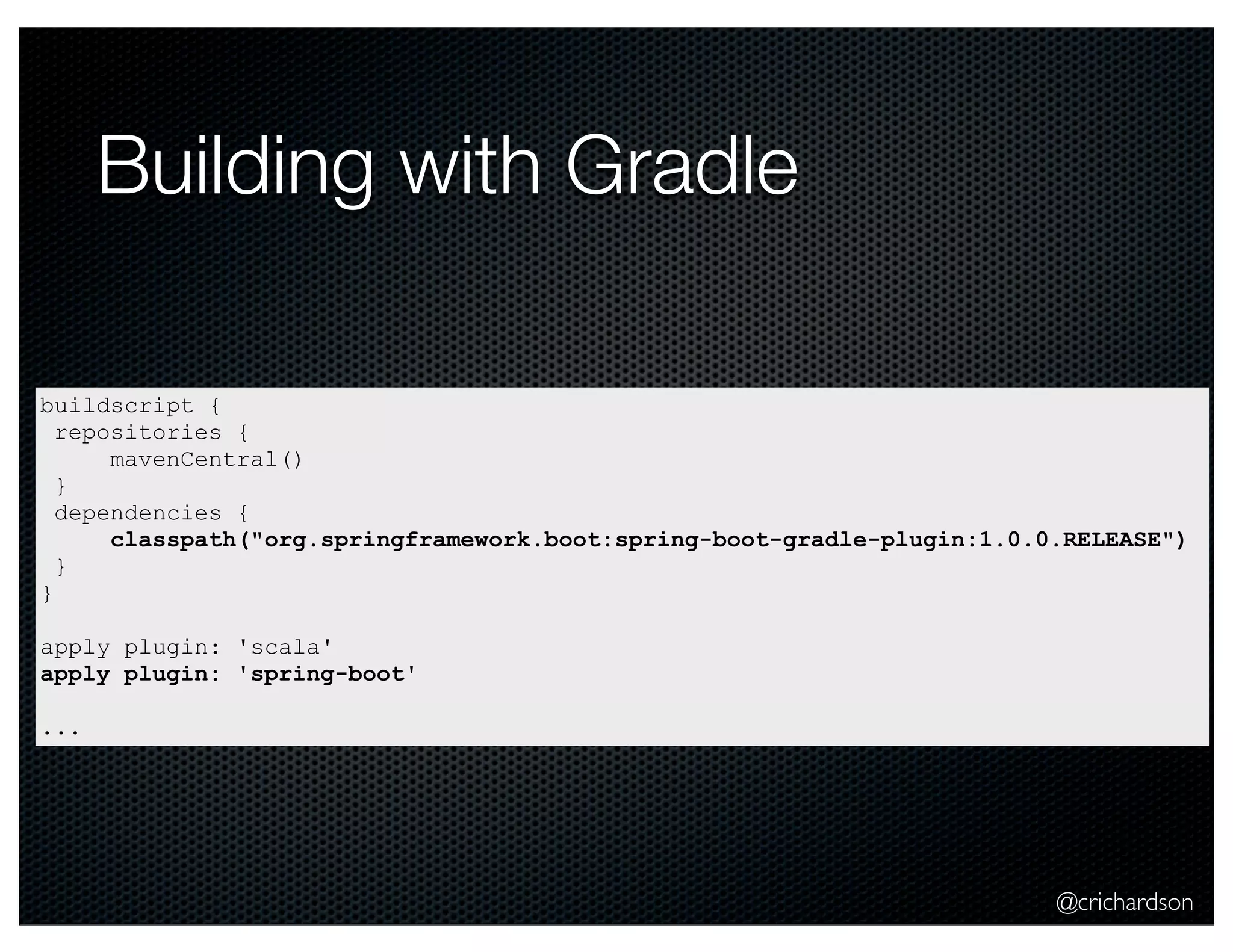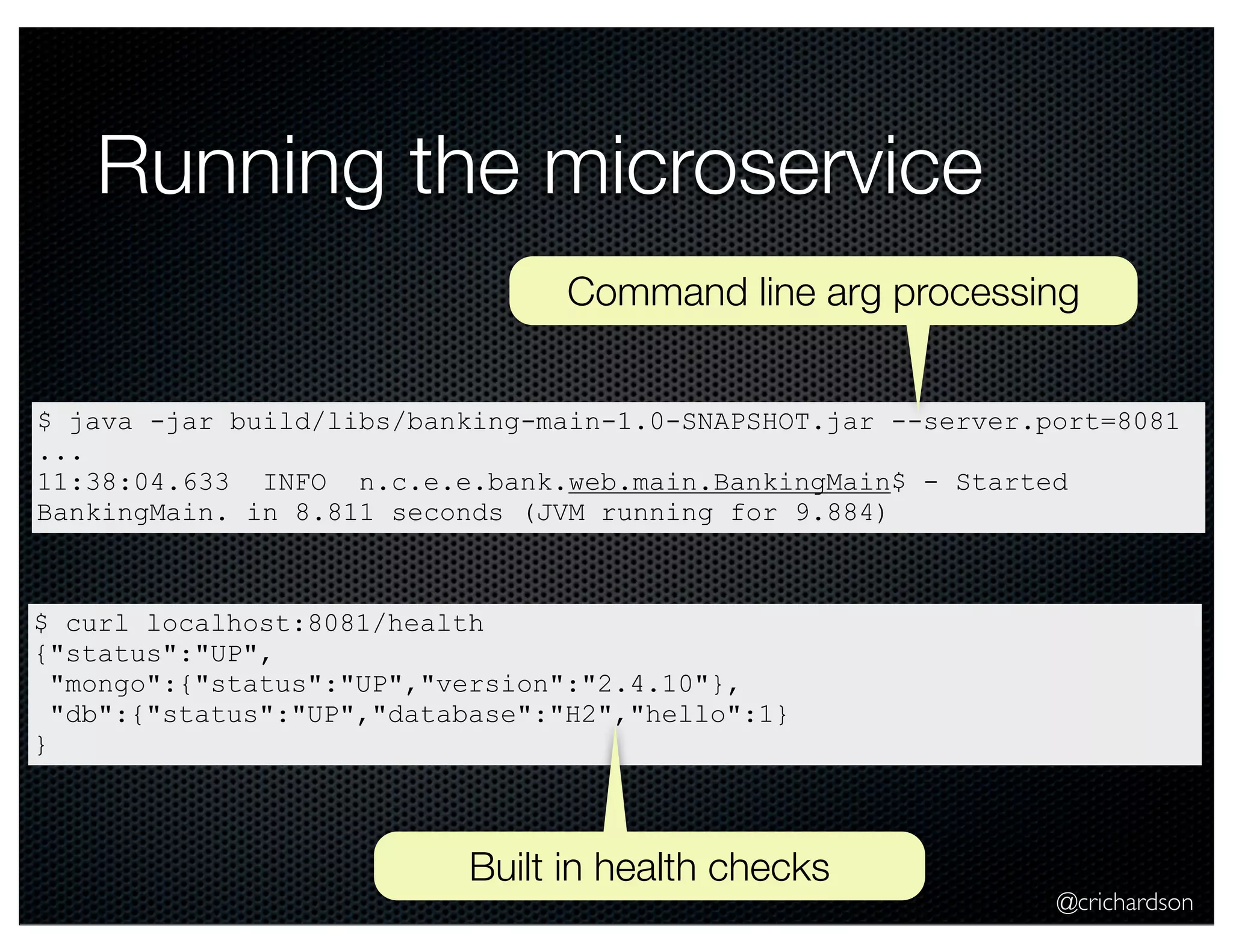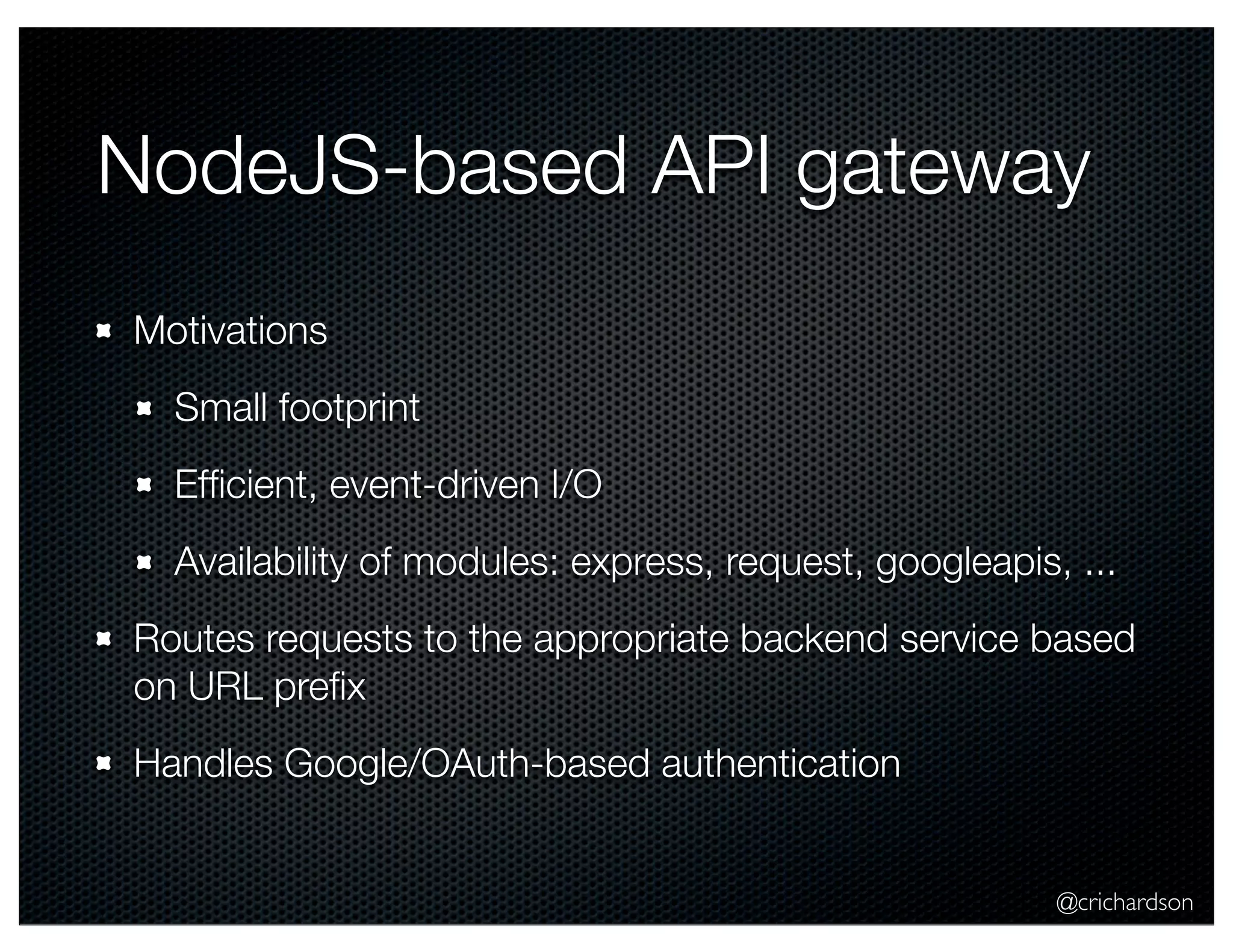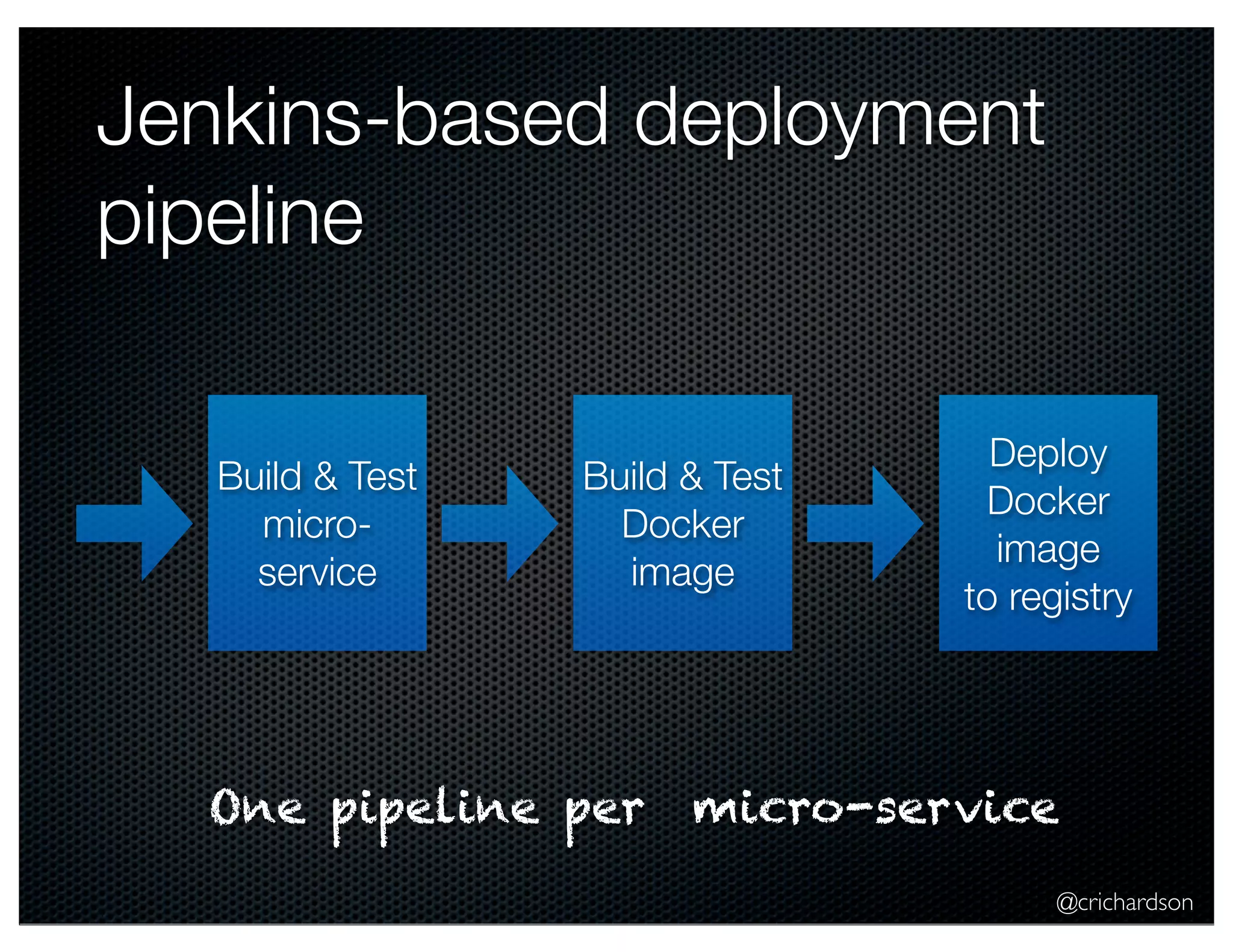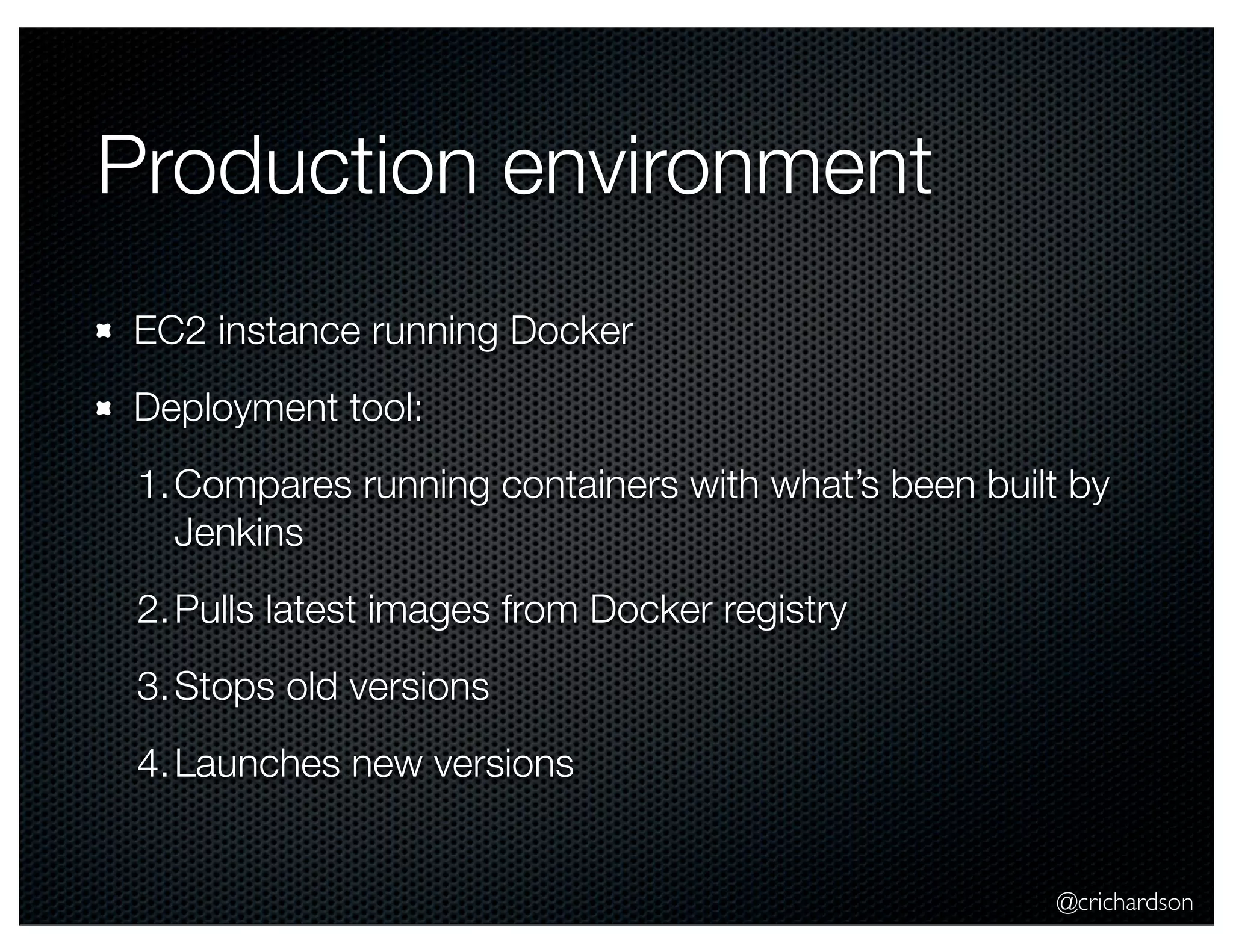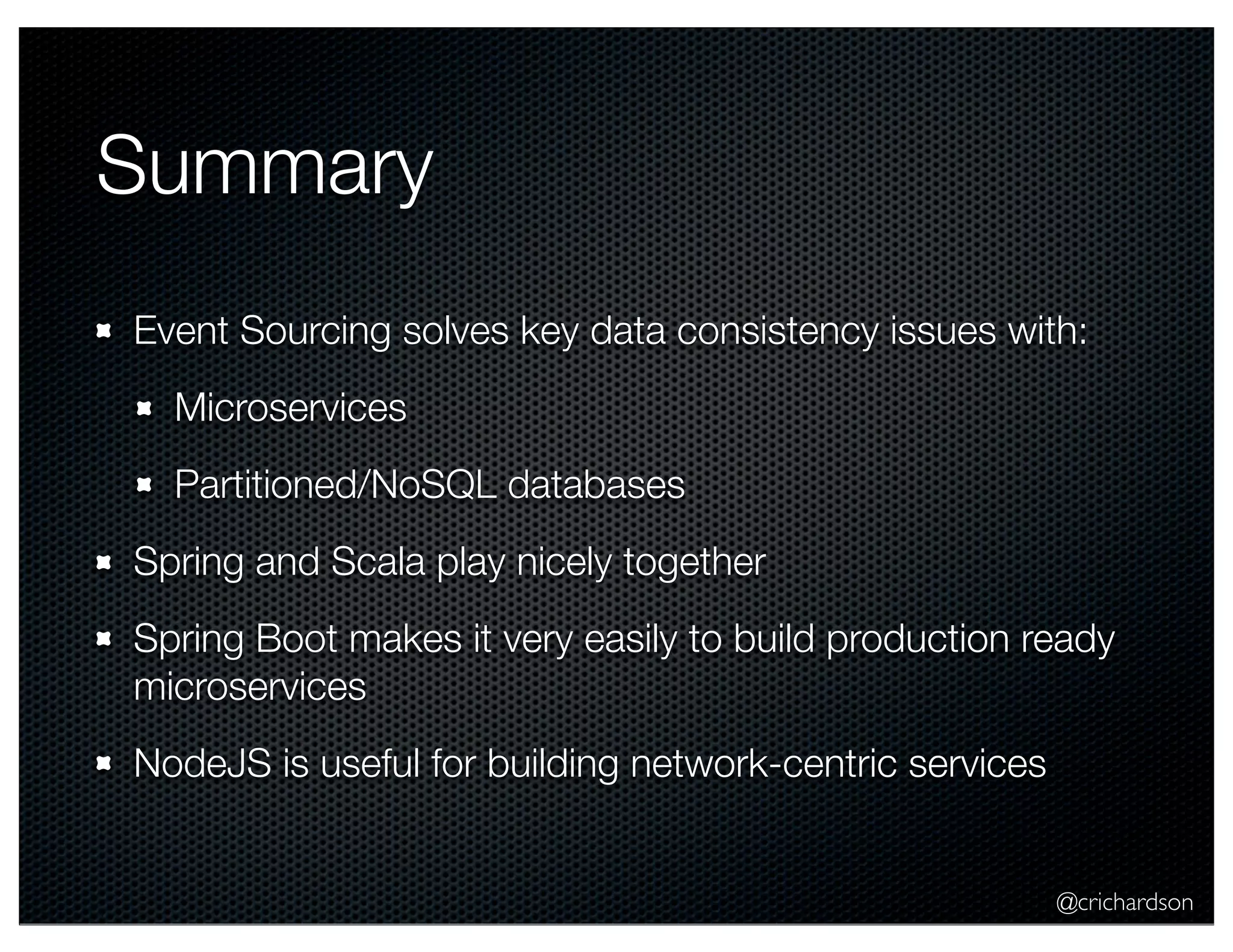This document summarizes Chris Richardson's presentation on building microservices with Scala, functional domain models, and Spring Boot. The presentation discusses using event sourcing to build event-driven microservices that are eventually consistent. It describes how to design aggregates that generate domain events, implement an event store to persist events immutably, and use event subscribers to update other services and materialized views. The document also covers challenges like handling duplicate events and implementing queries in an eventually consistent system.

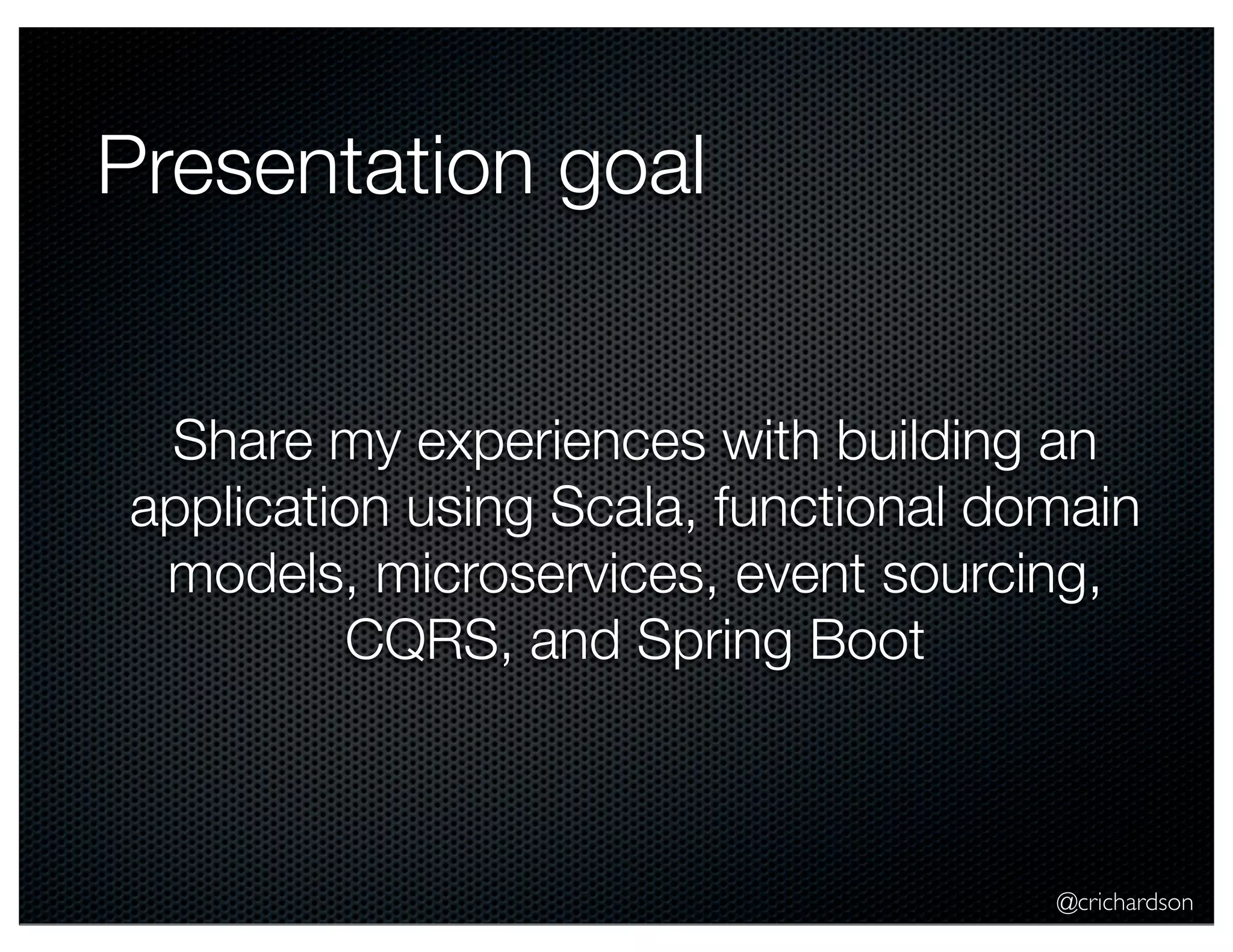
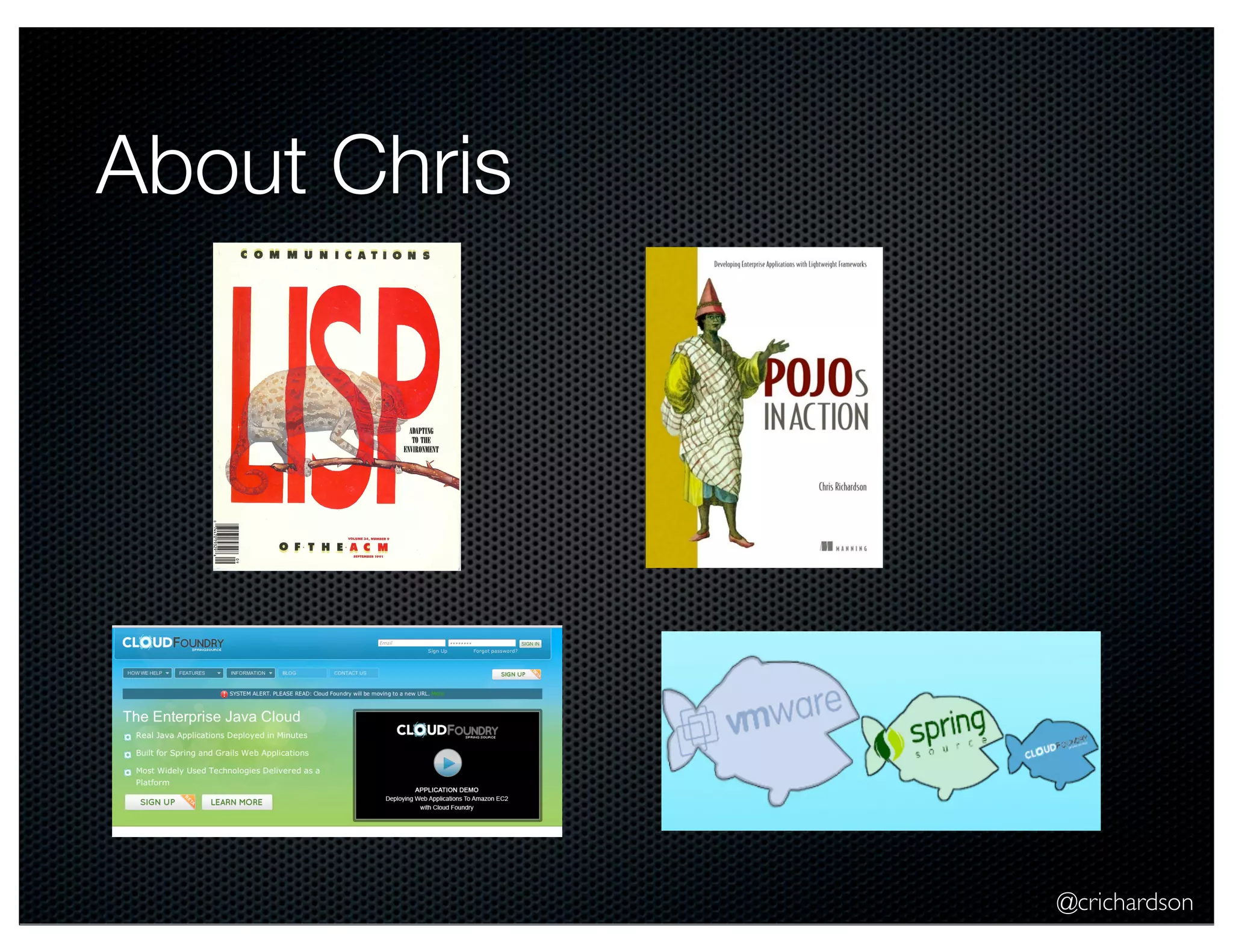
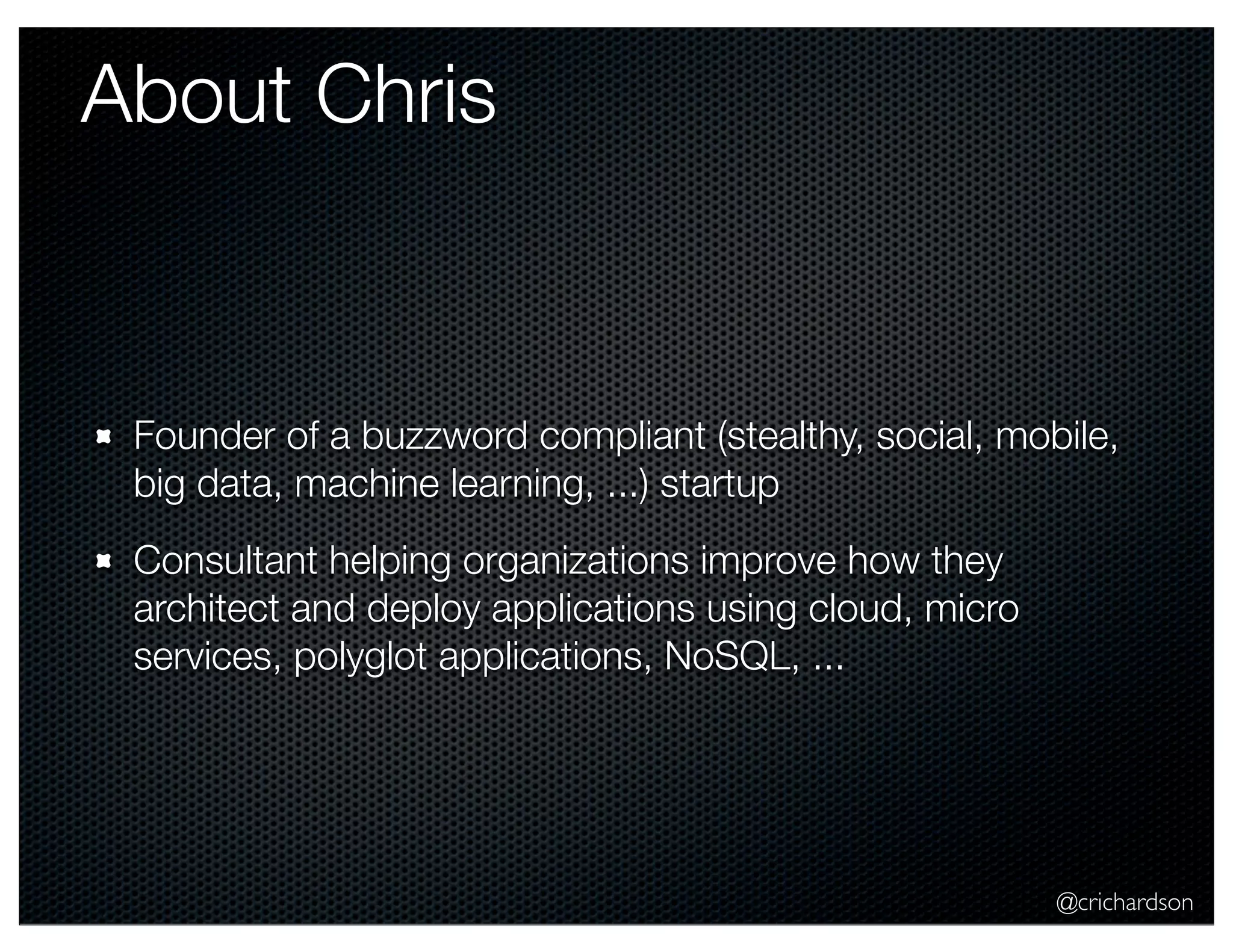
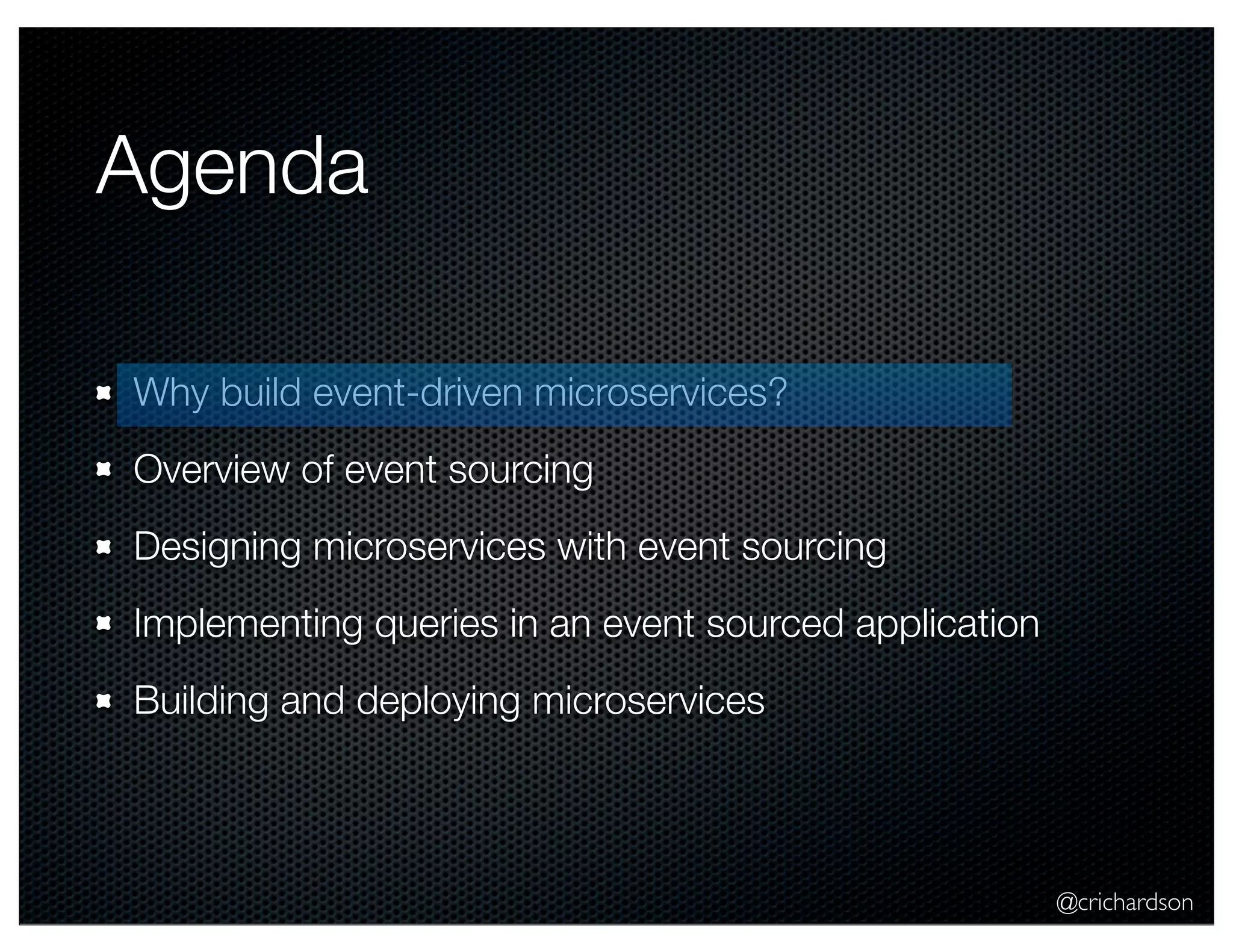


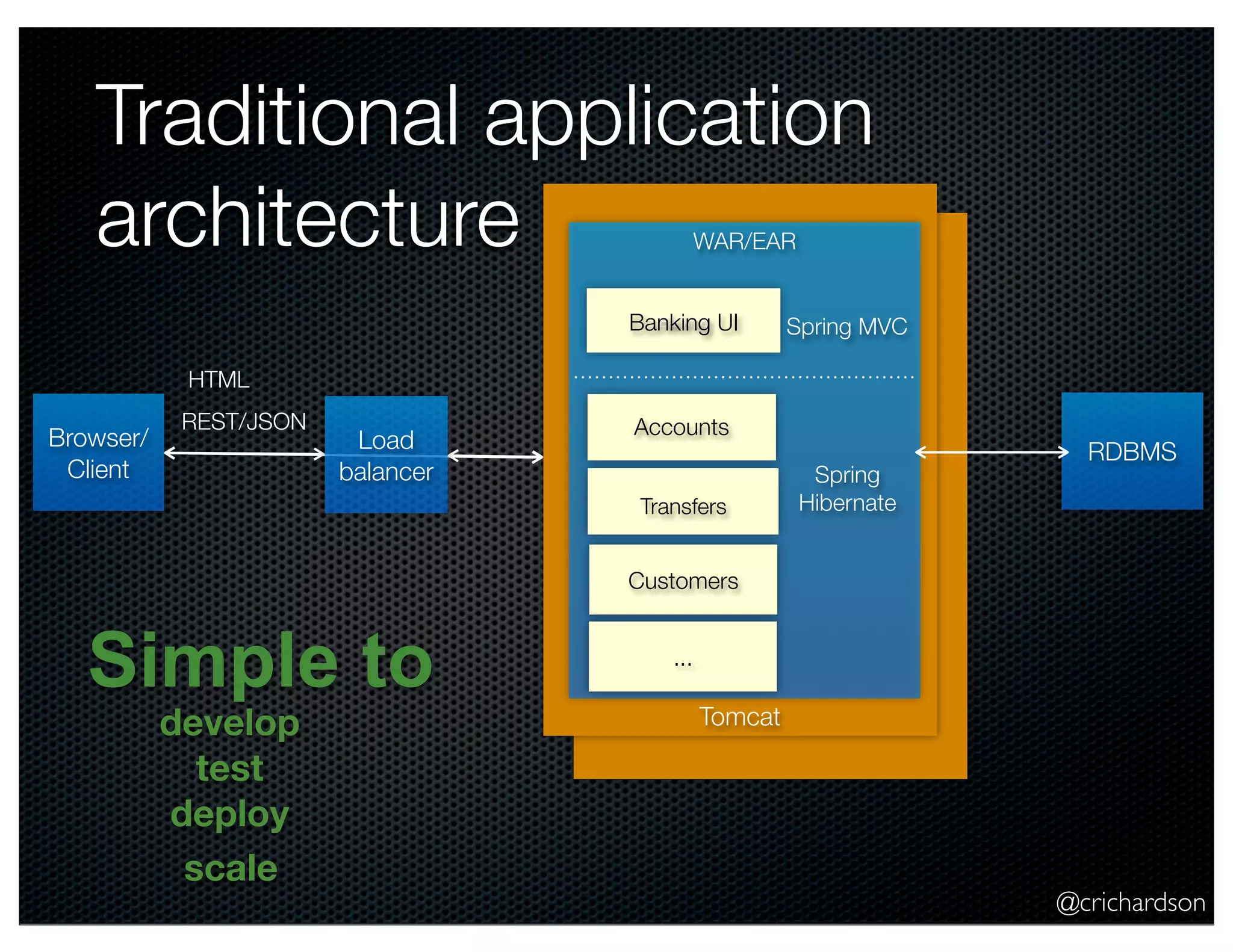

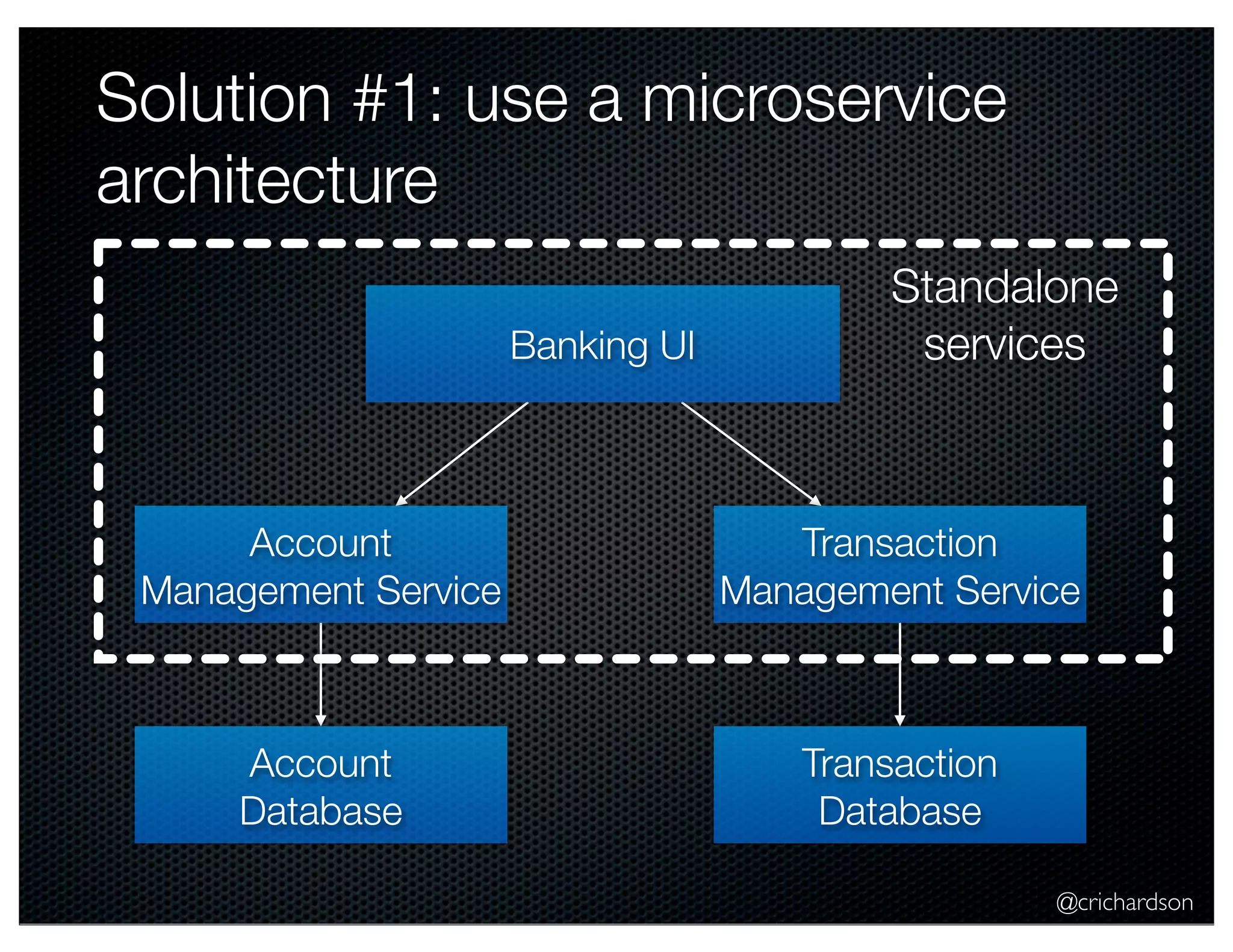
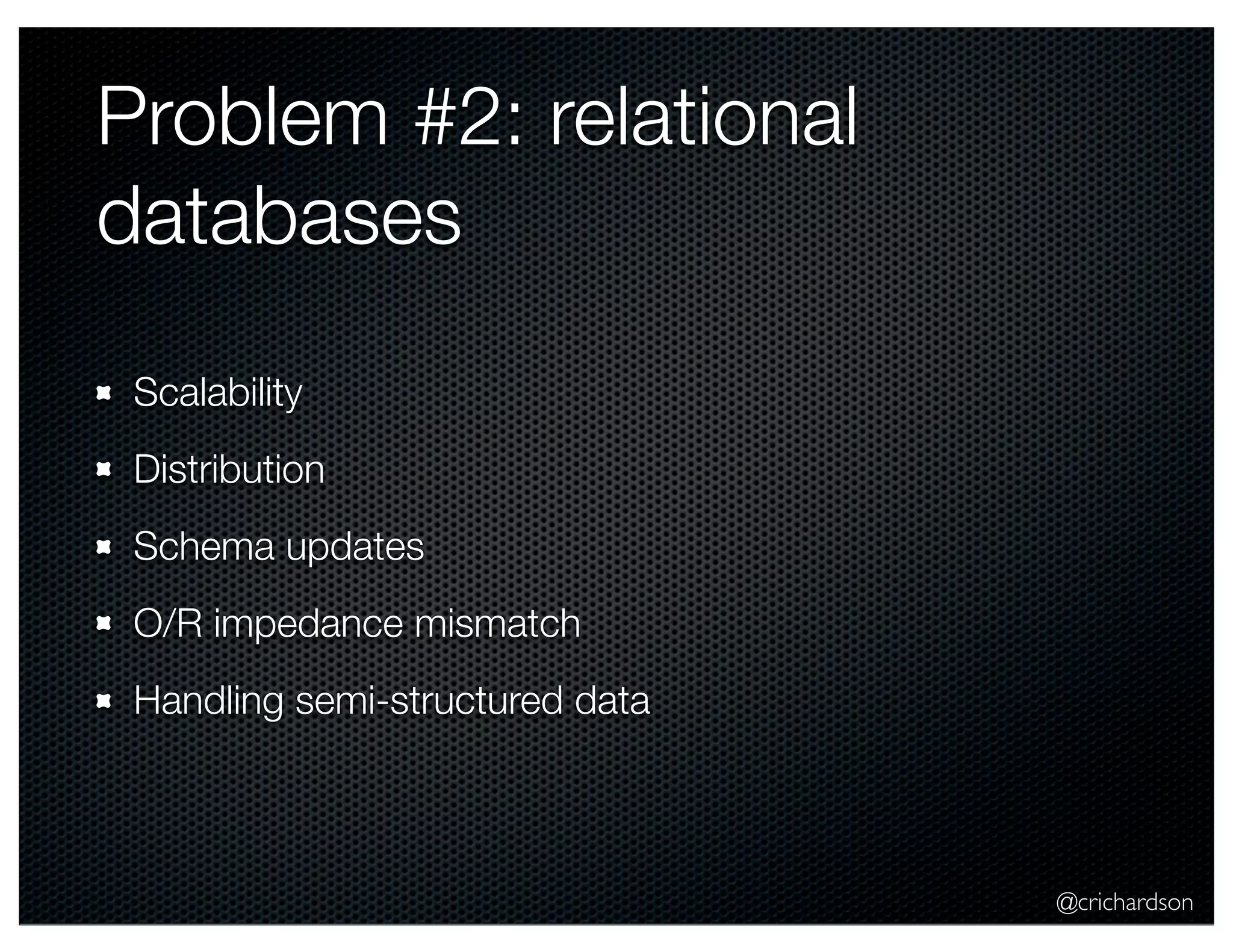

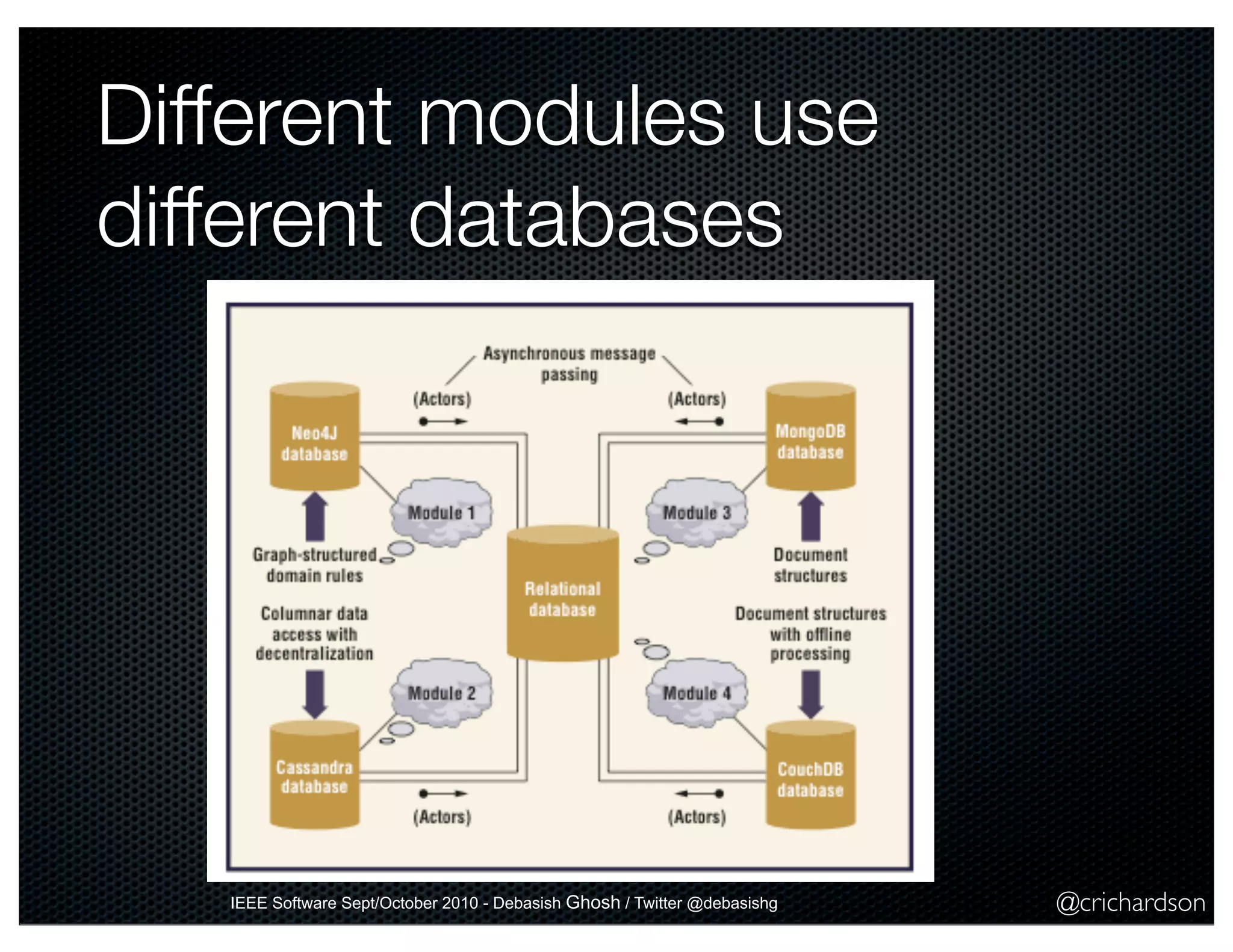
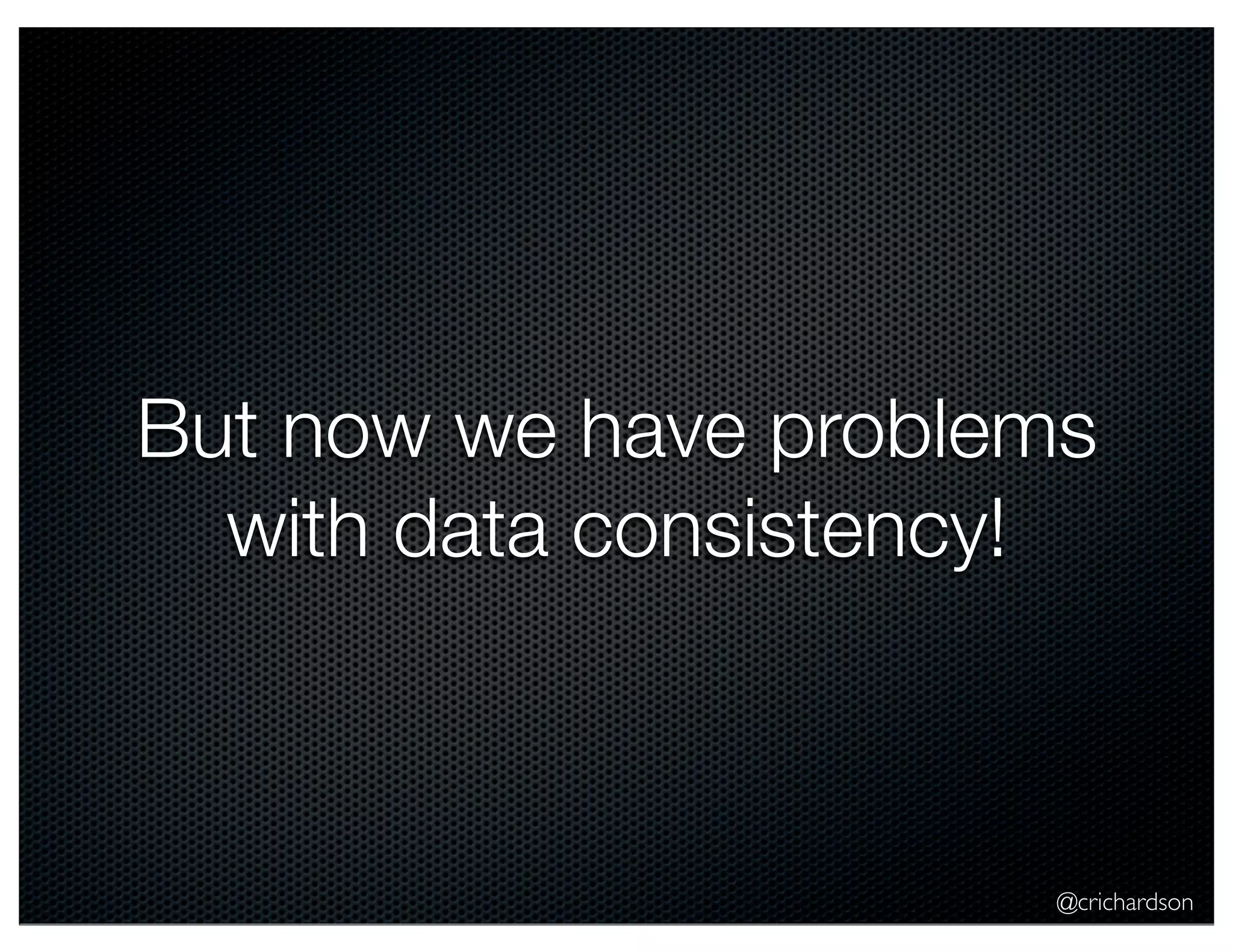
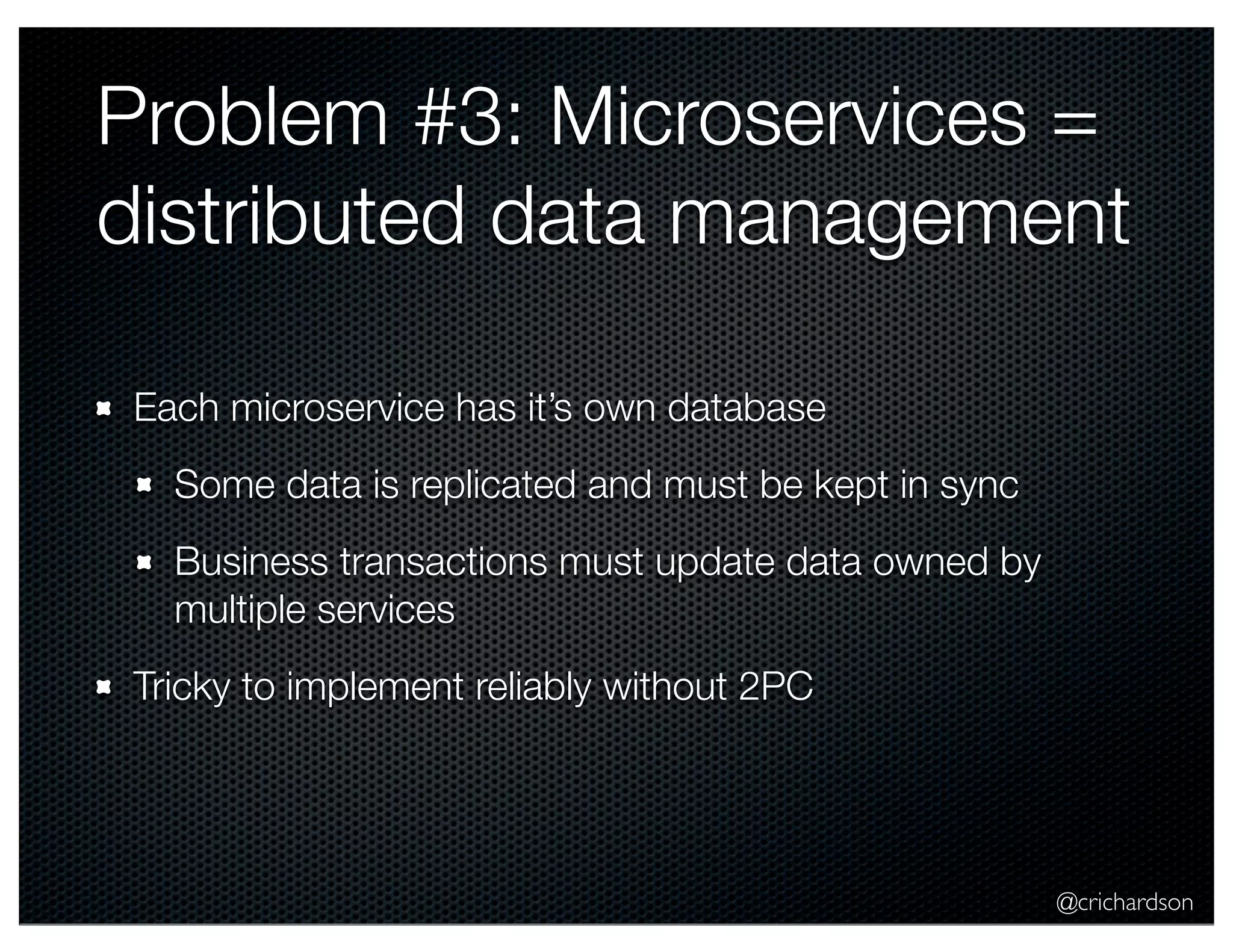
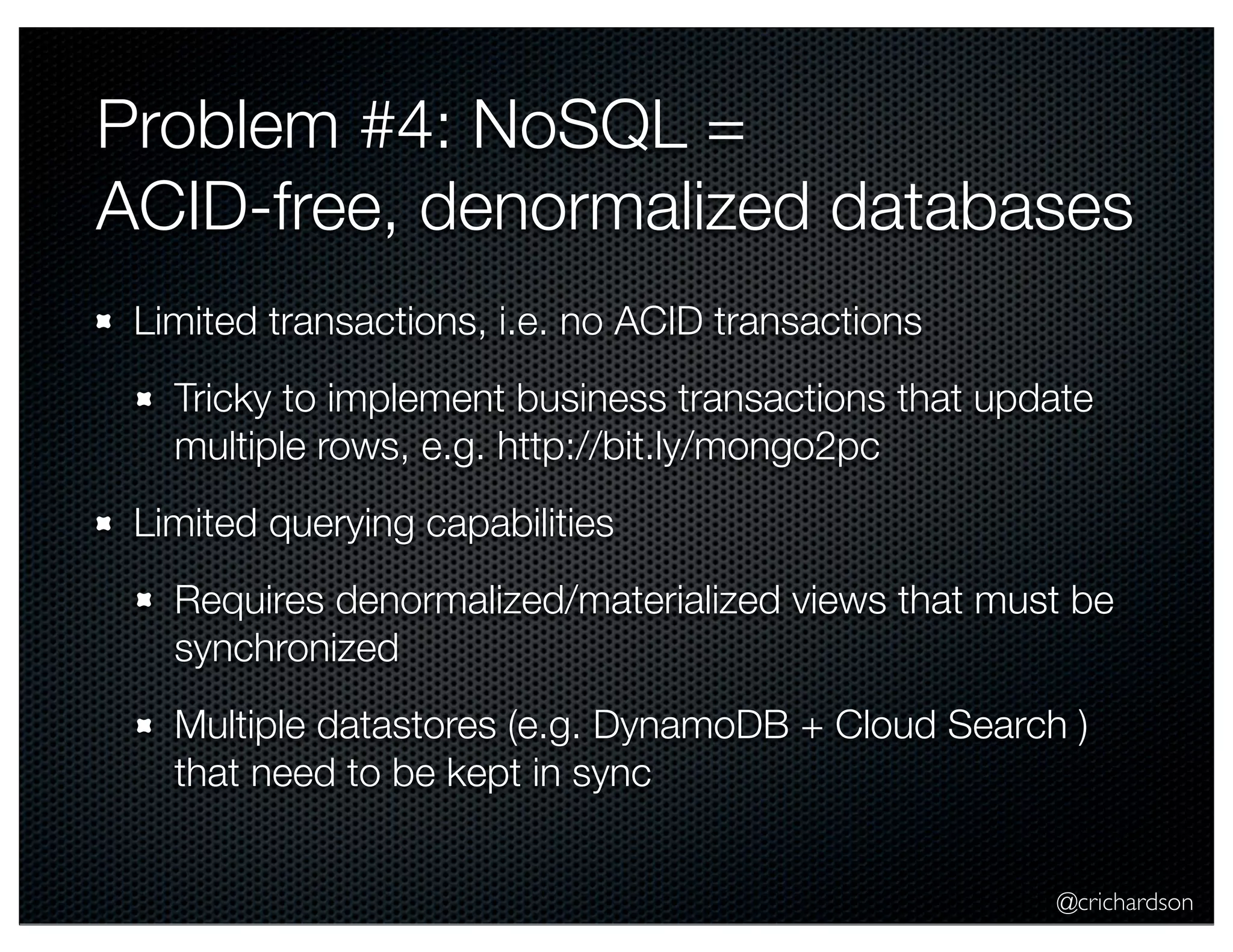
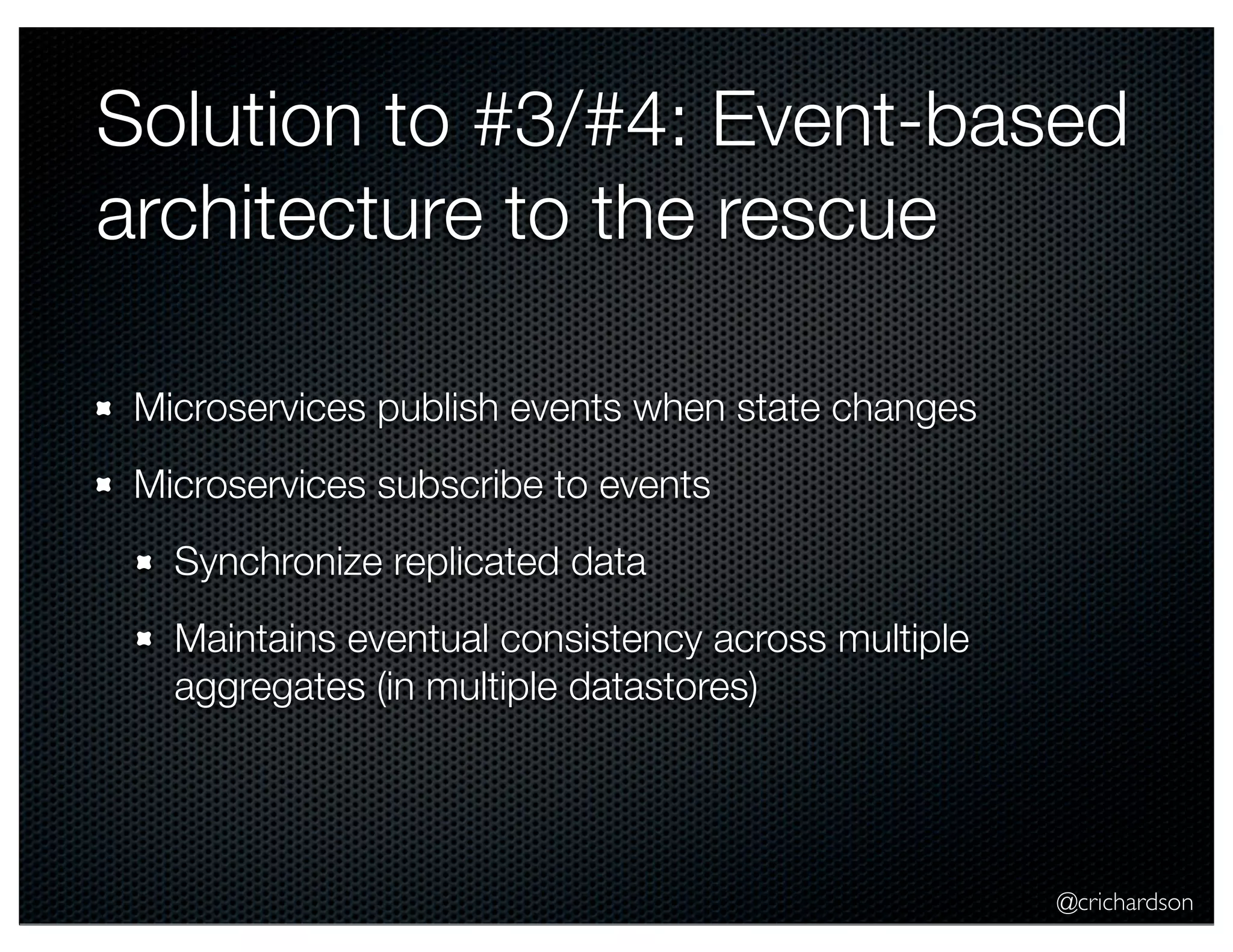
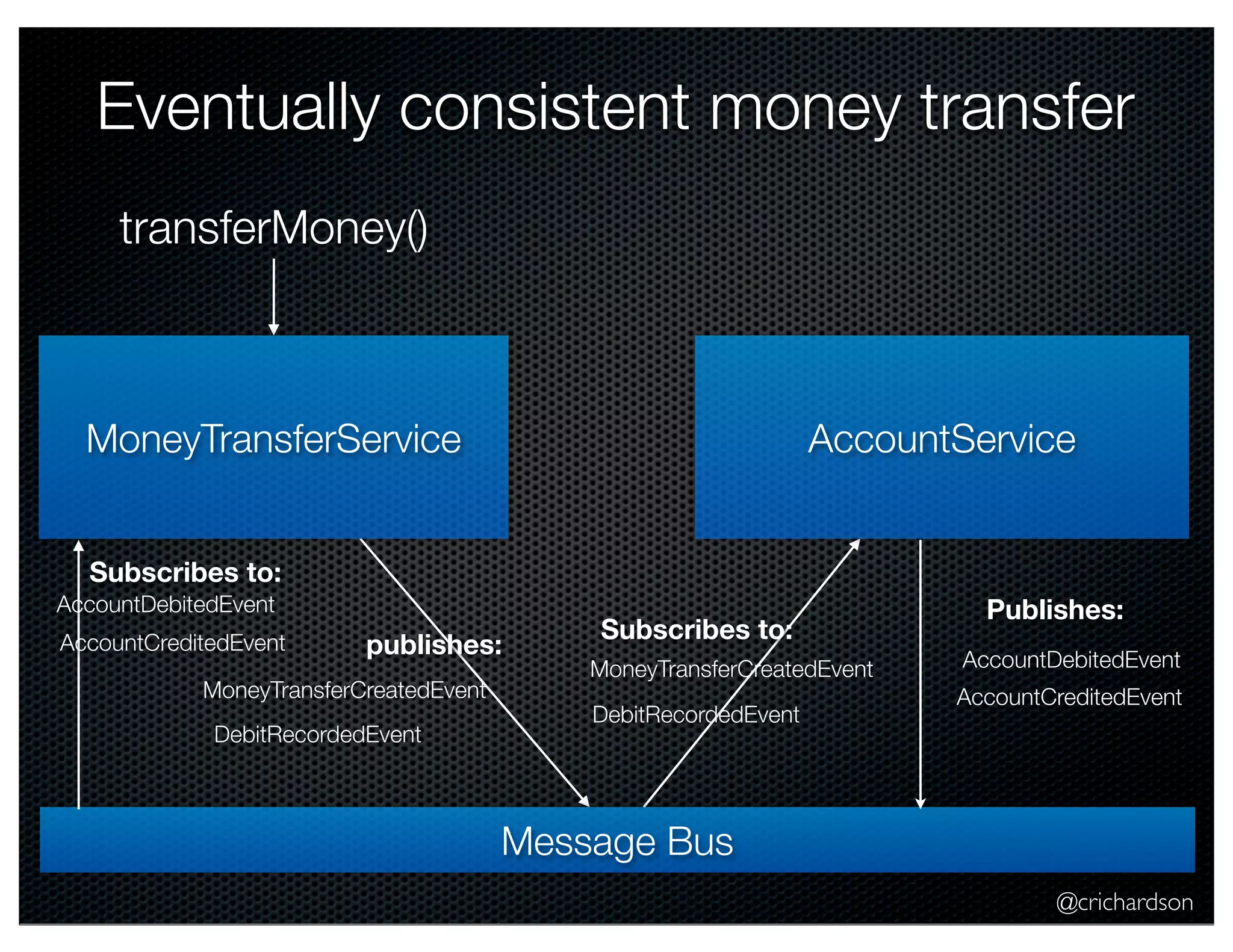
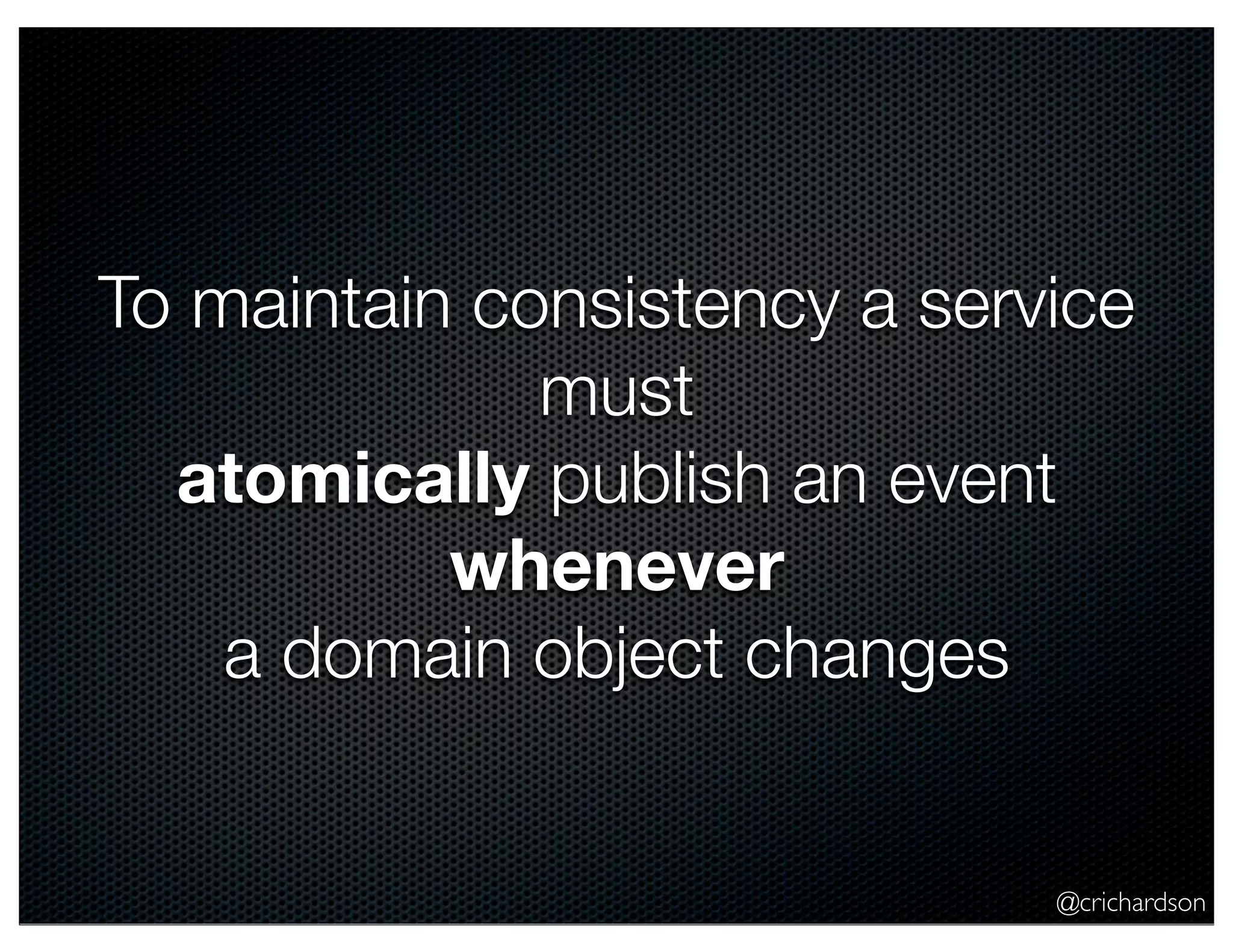
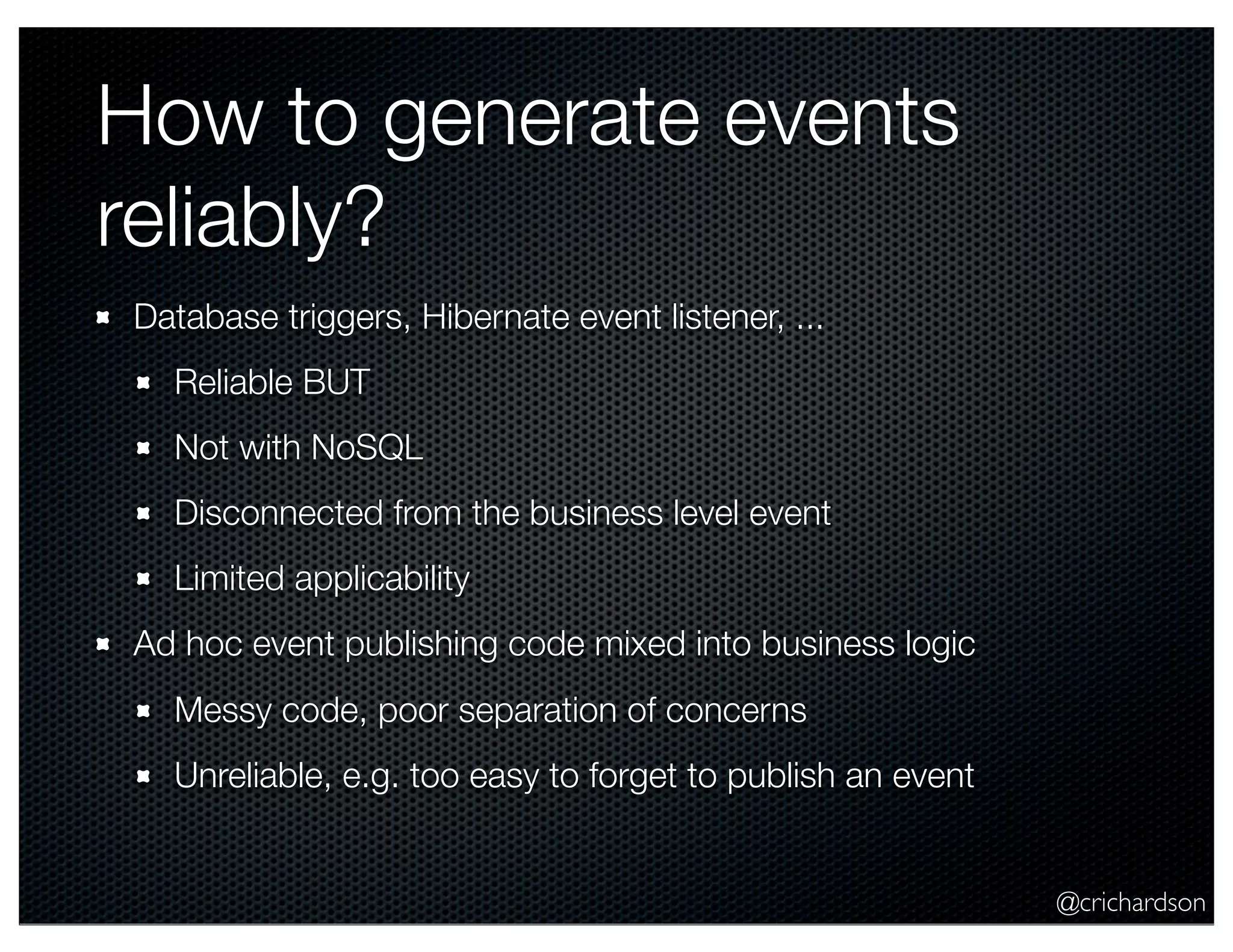


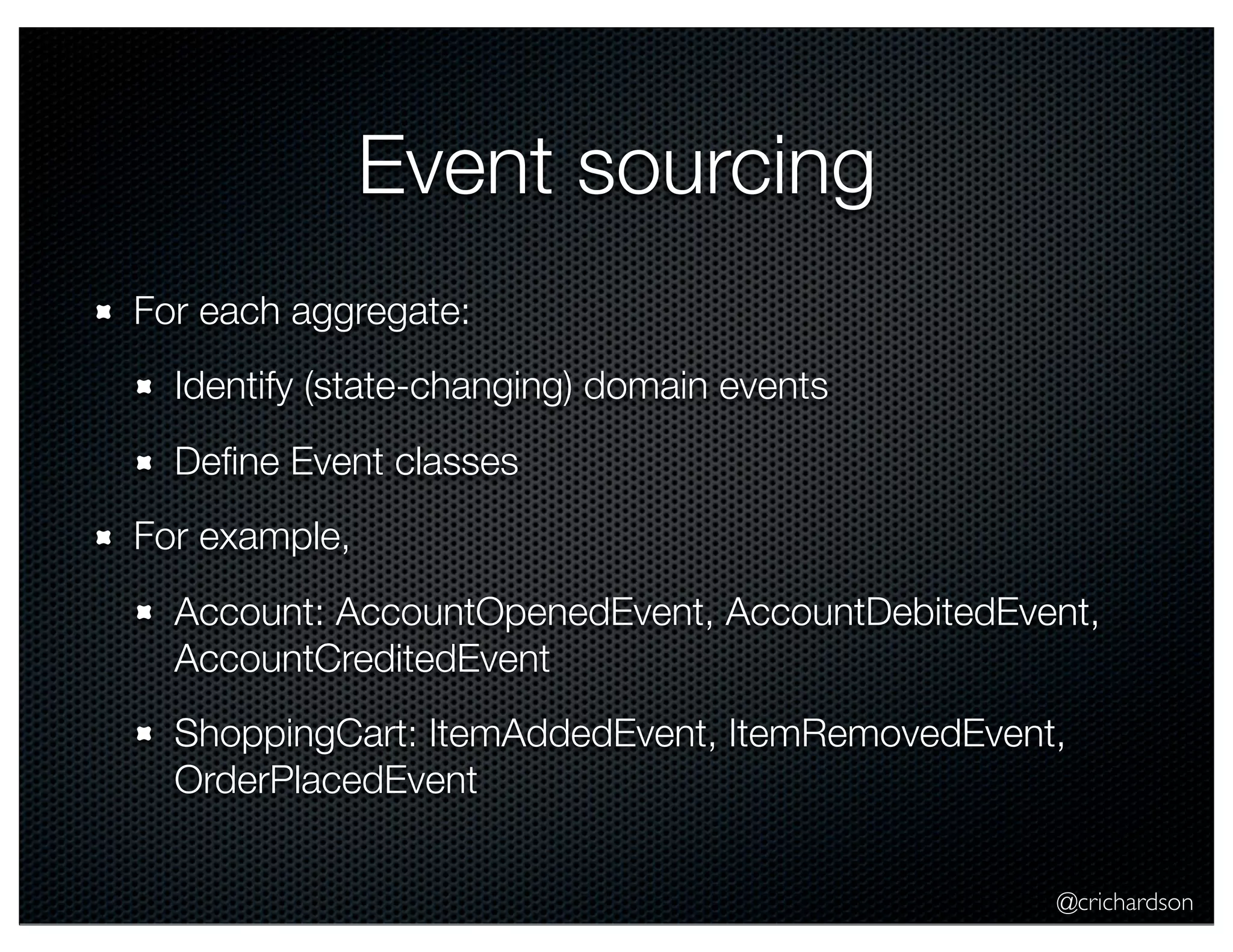

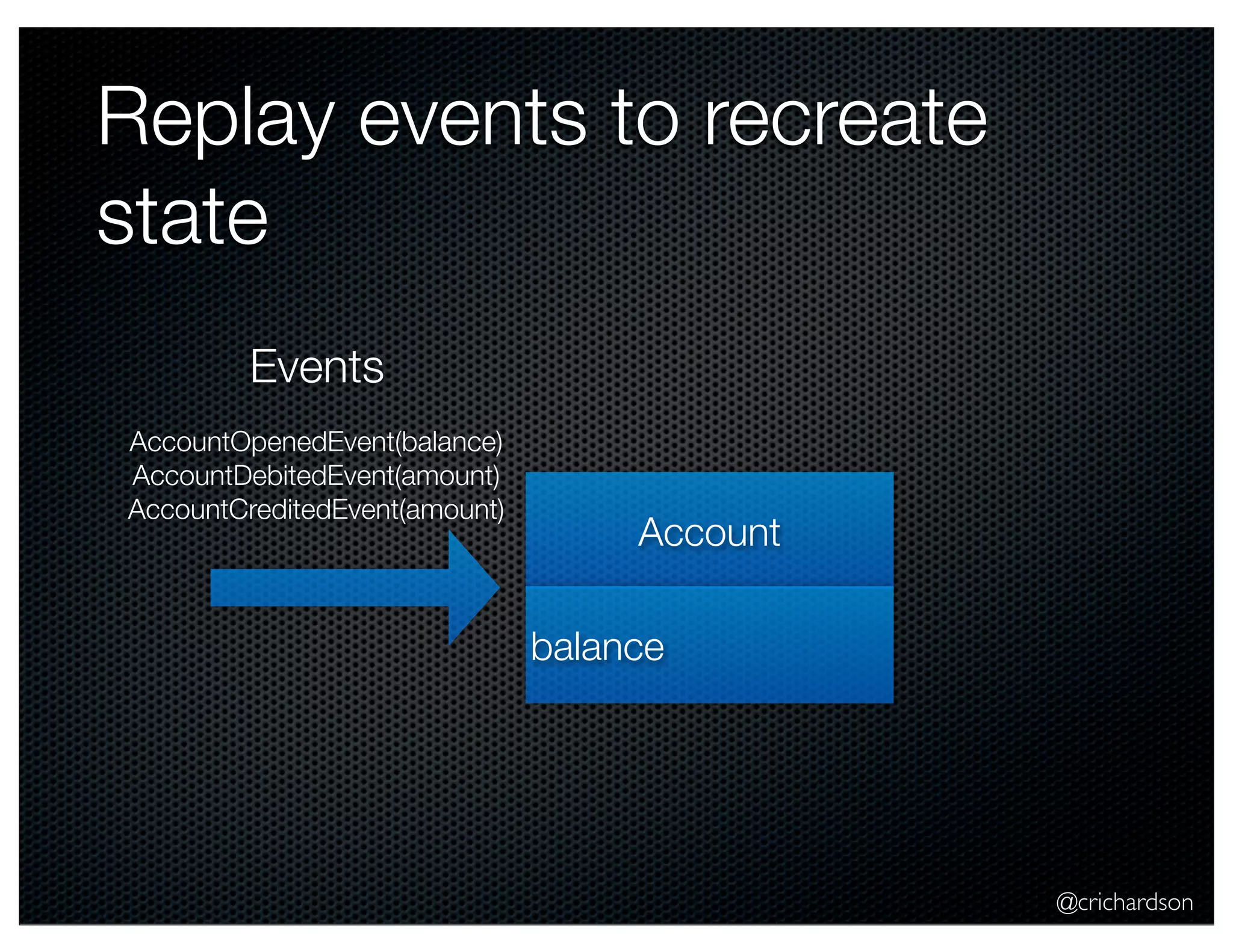
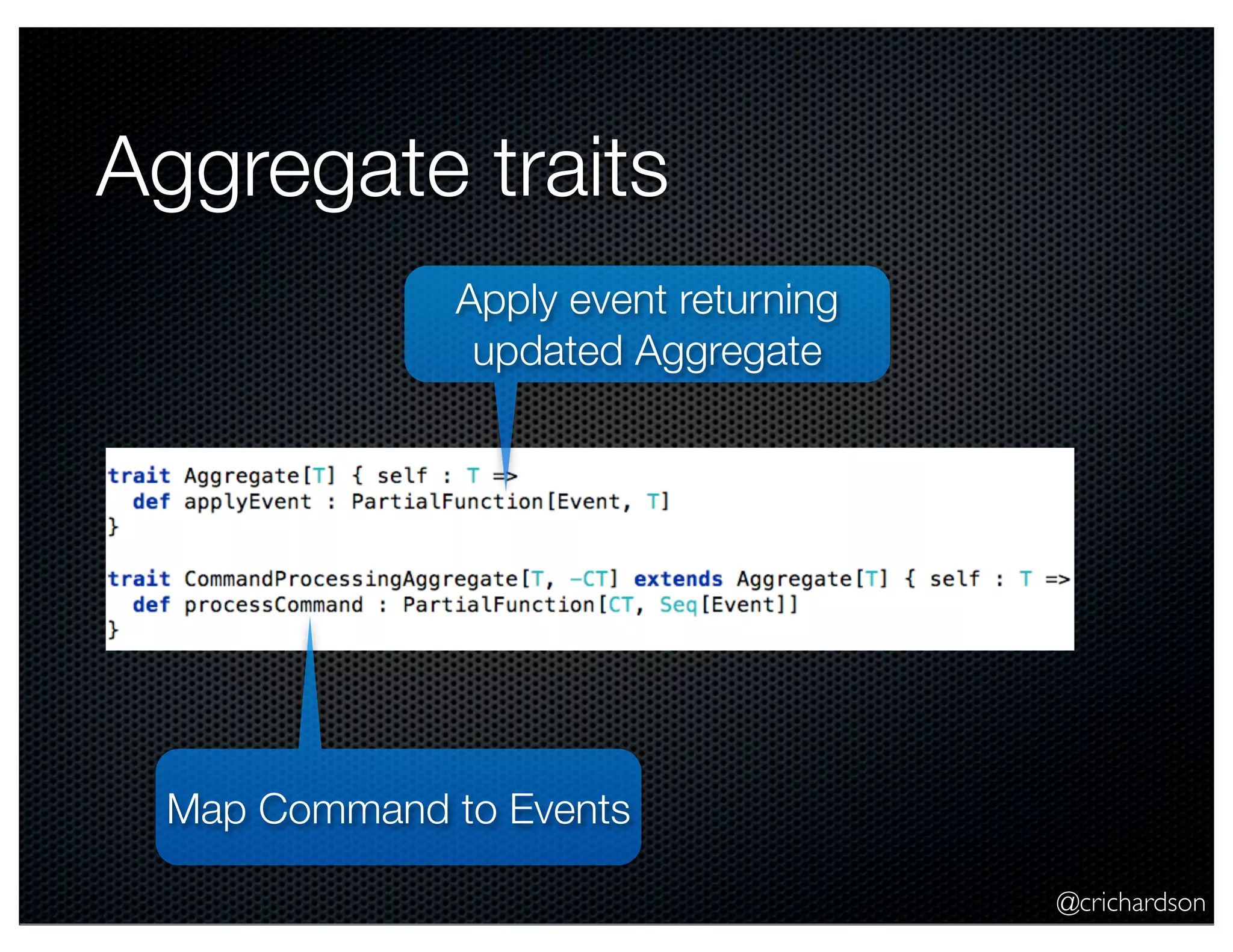
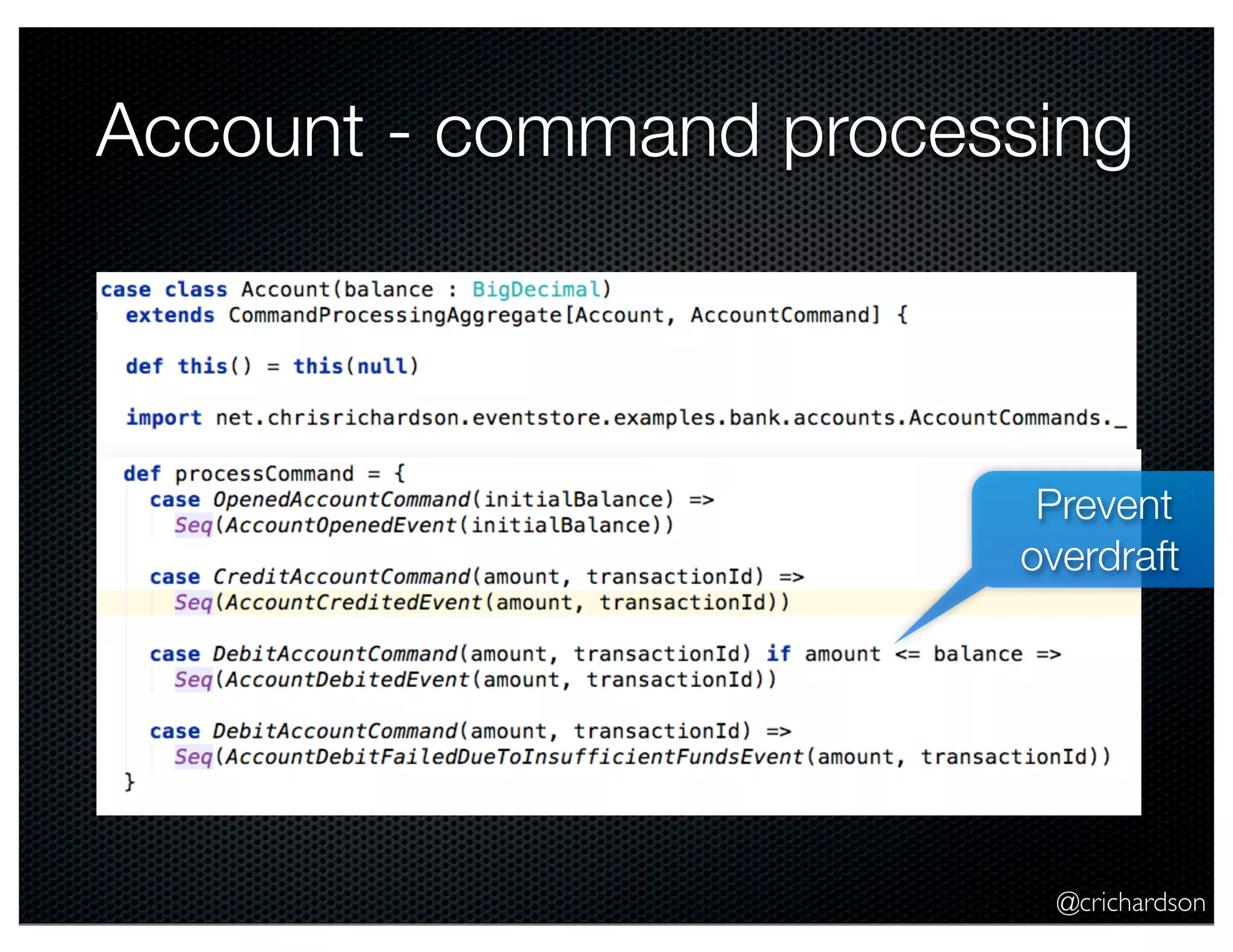

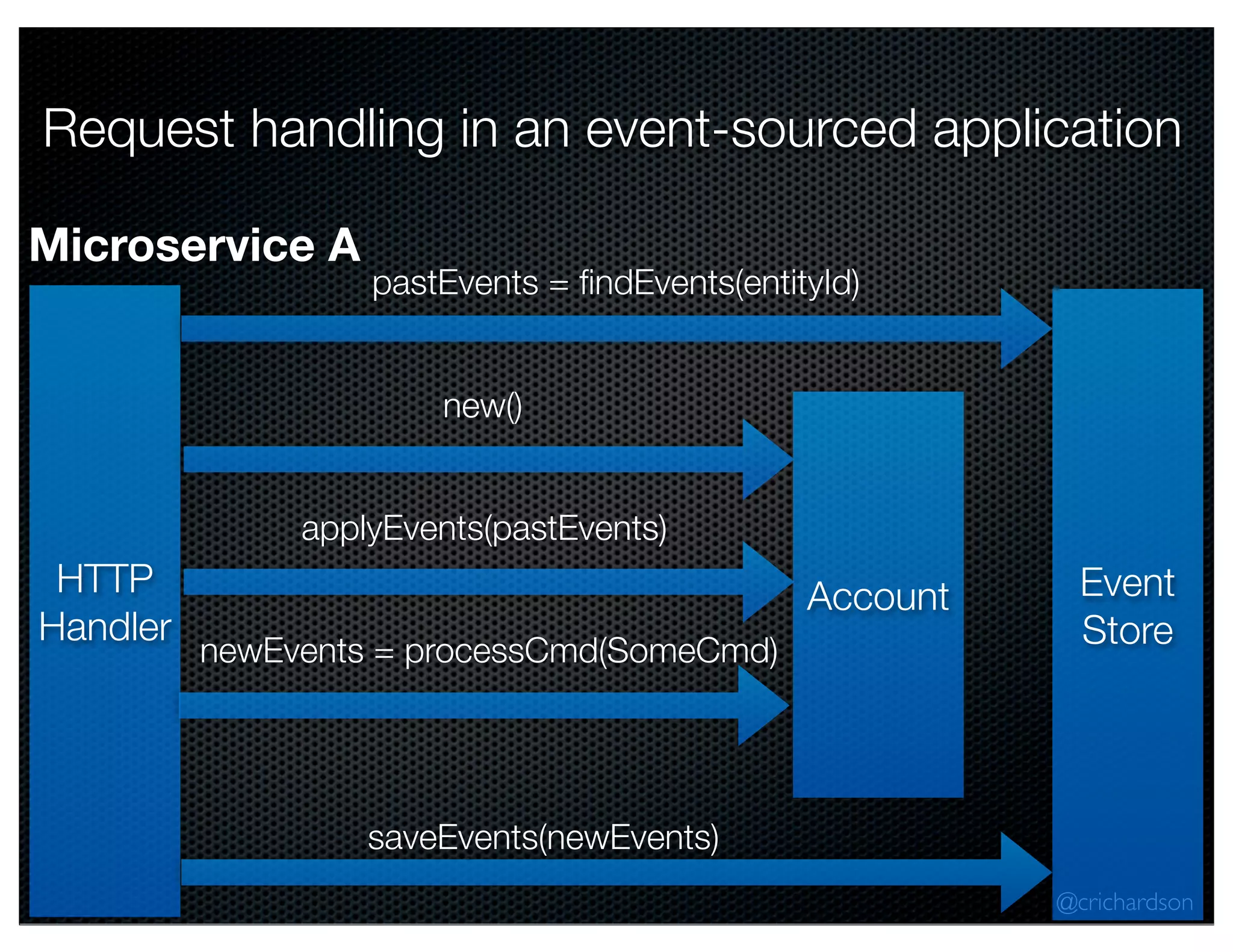
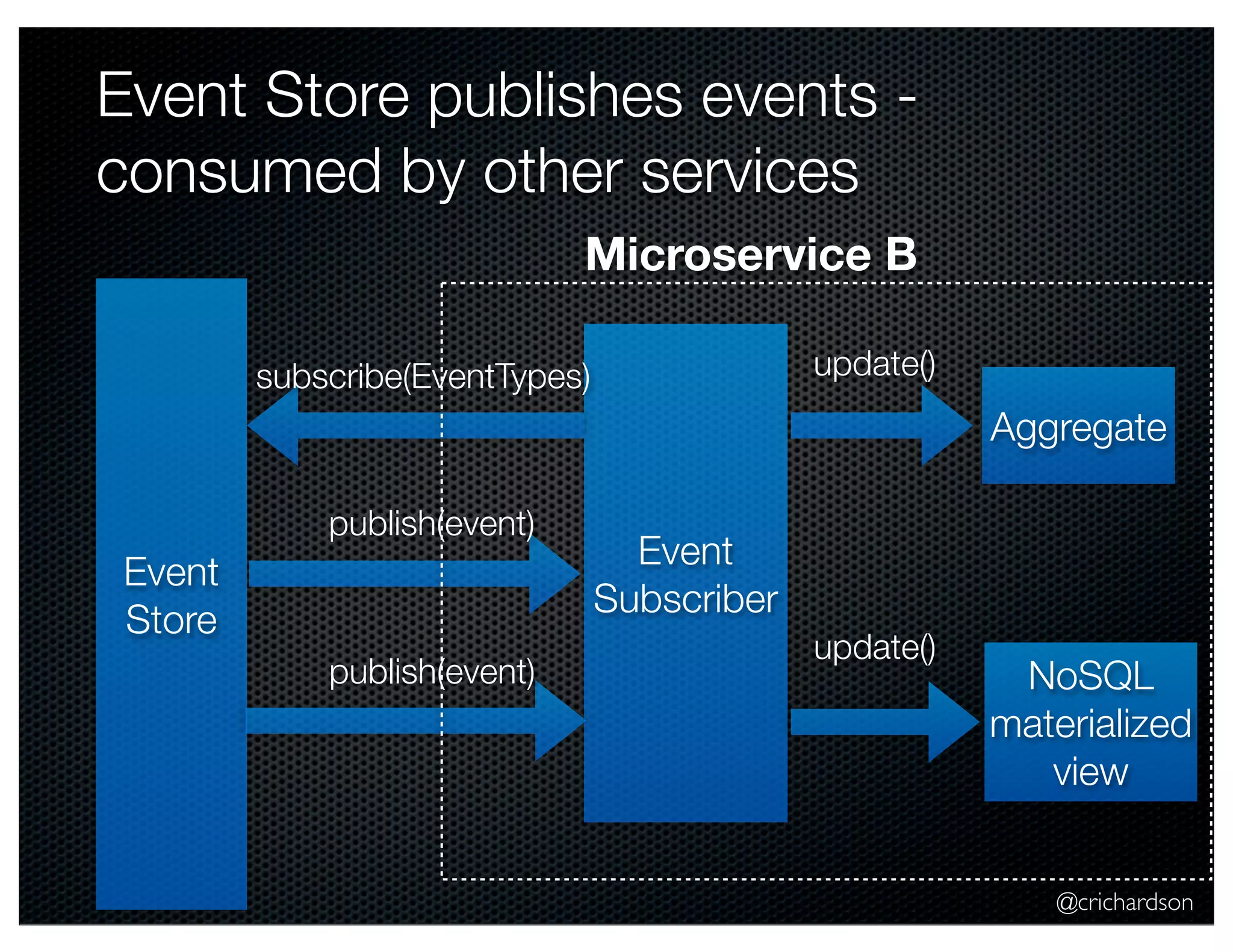
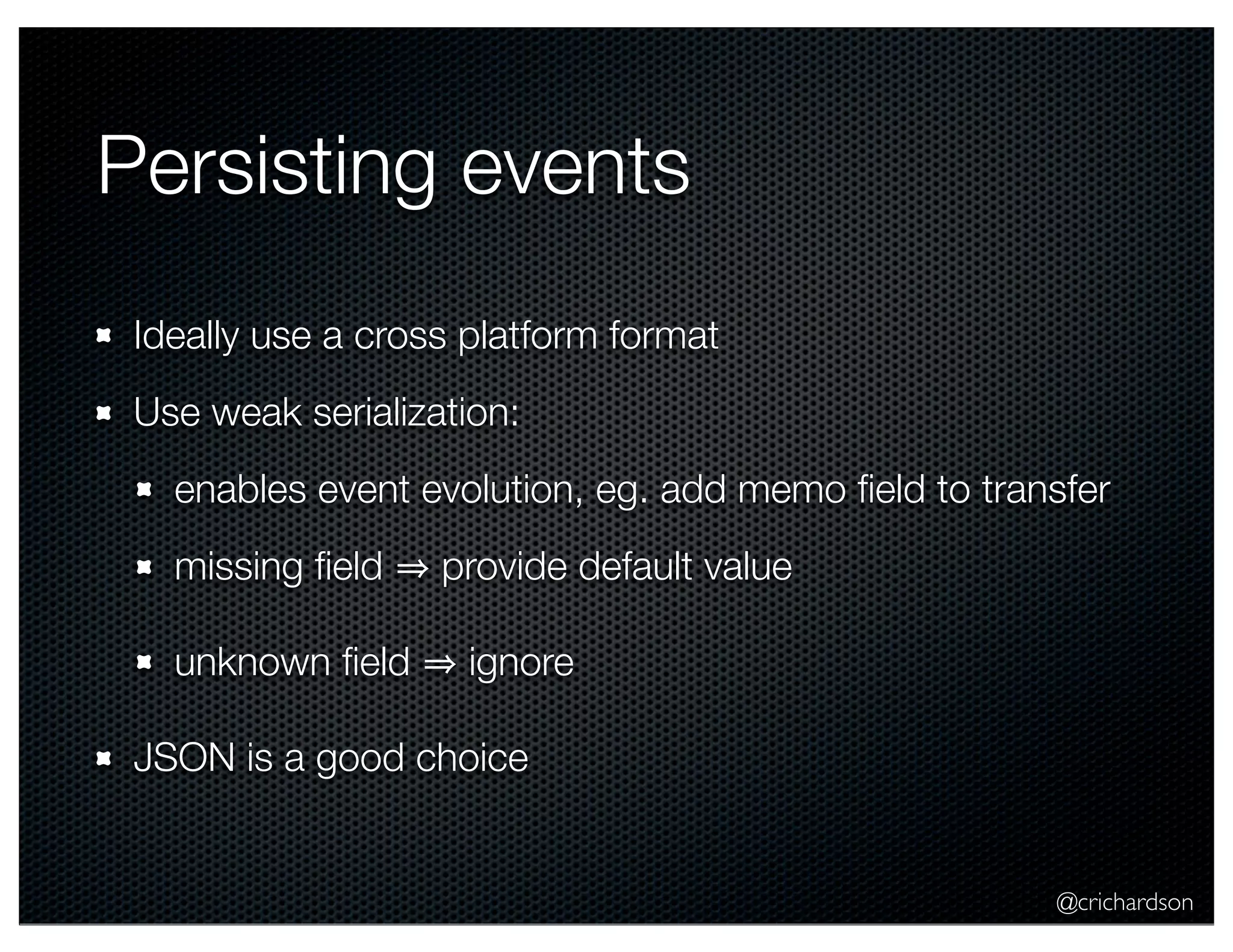
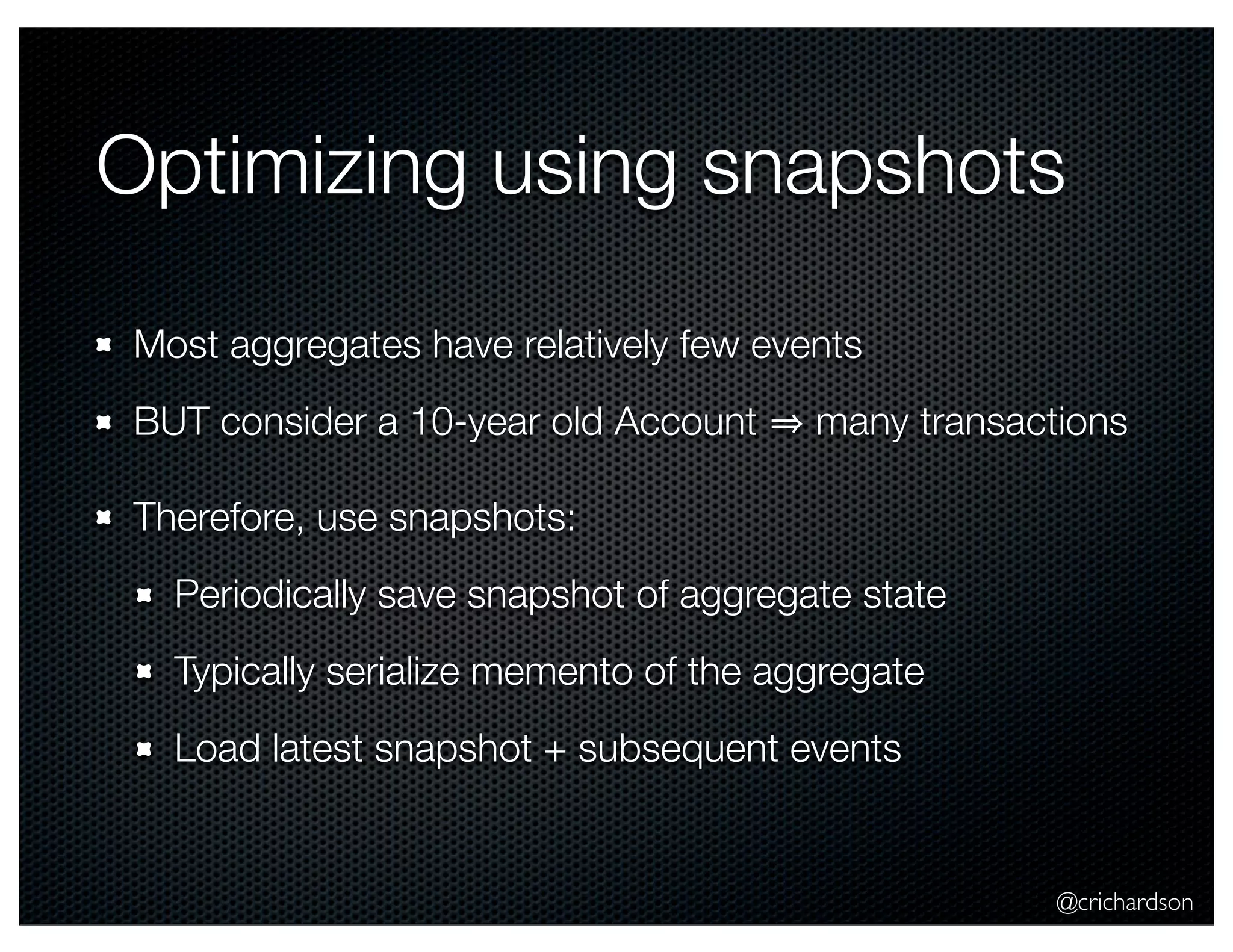
![@crichardson Event Store API trait EventStore { def save[T <: Aggregate[T]](entity: T, events: Seq[Event], assignedId : Option[EntityId] = None): Future[EntityWithIdAndVersion[T]] def update[T <: Aggregate[T]](entityIdAndVersion : EntityIdAndVersion, entity: T, events: Seq[Event]): Future[EntityWithIdAndVersion[T]] def find[T <: Aggregate[T] : ClassTag](entityId: EntityId) : Future[EntityWithIdAndVersion[T]] def findOptional[T <: Aggregate[T] : ClassTag](entityId: EntityId) Future[Option[EntityWithIdAndVersion[T]]] def subscribe(subscriptionId: SubscriptionId): Future[AcknowledgableEventStream] }](https://image.slidesharecdn.com/buildingmicroserviceswithscalafunctionaldomainmodelsandspringbootchrisrichardson-141030115818-conversion-gate01/75/Building-Microservices-with-Scala-functional-domain-models-and-Spring-Boot-Chris-Richardson-33-2048.jpg)
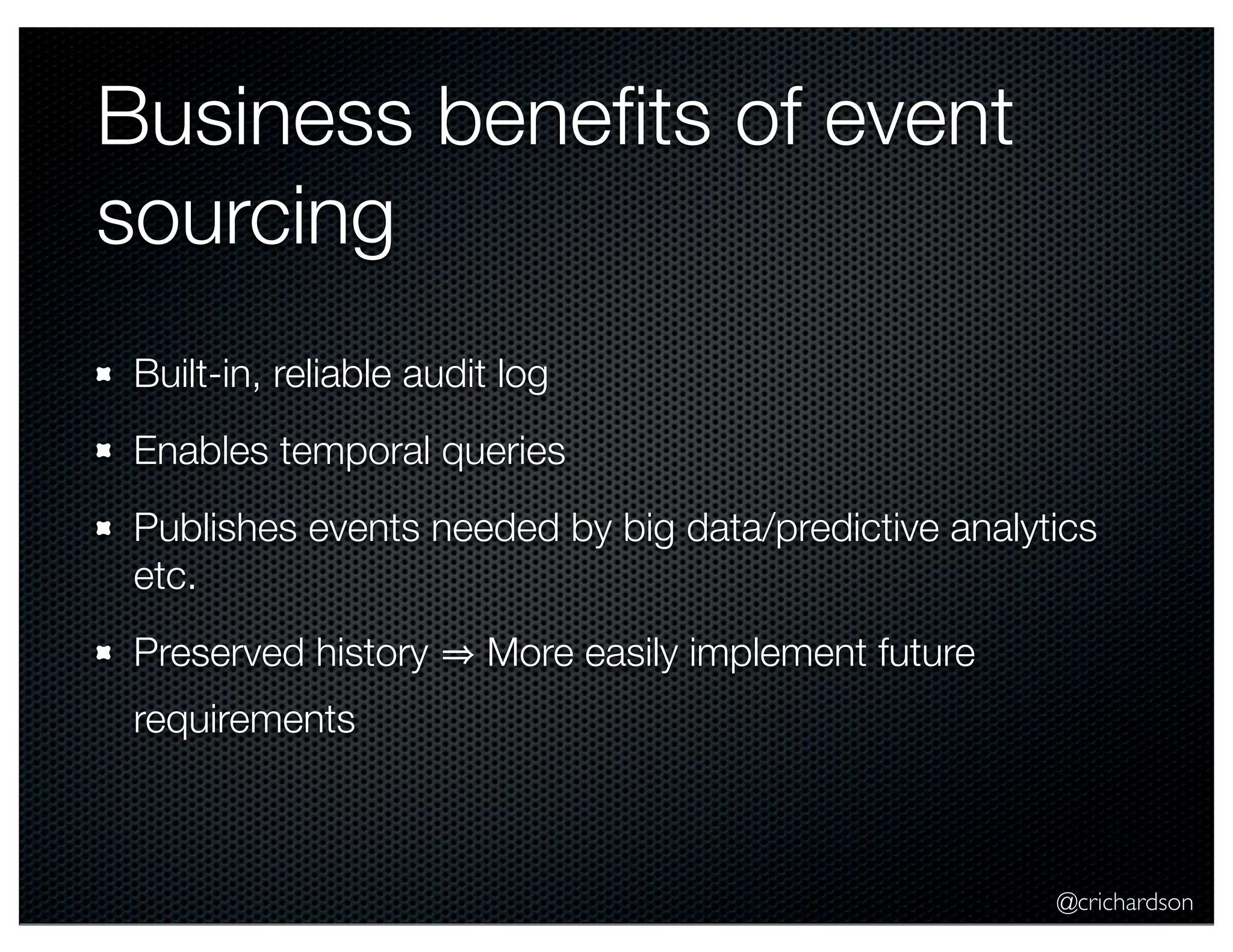


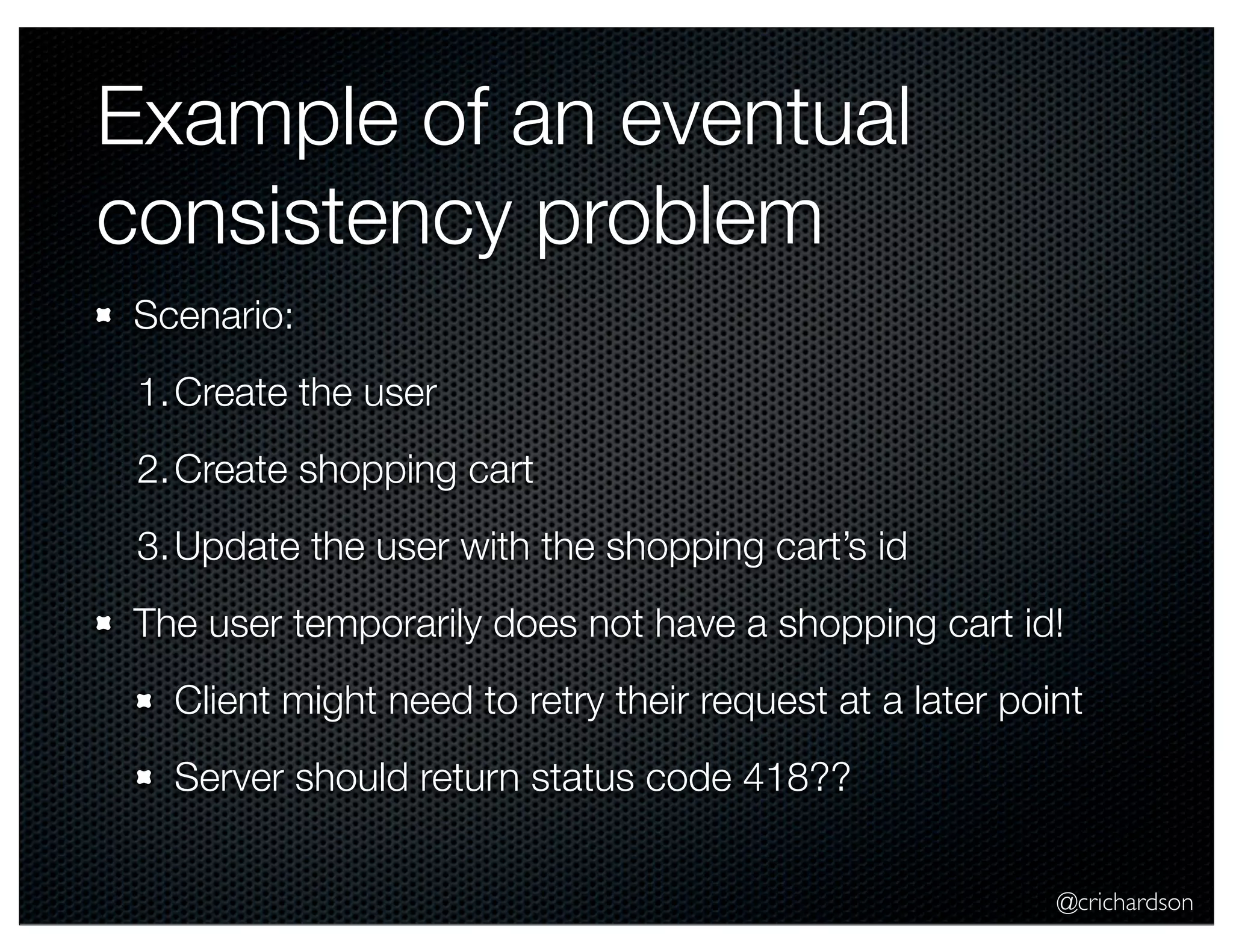
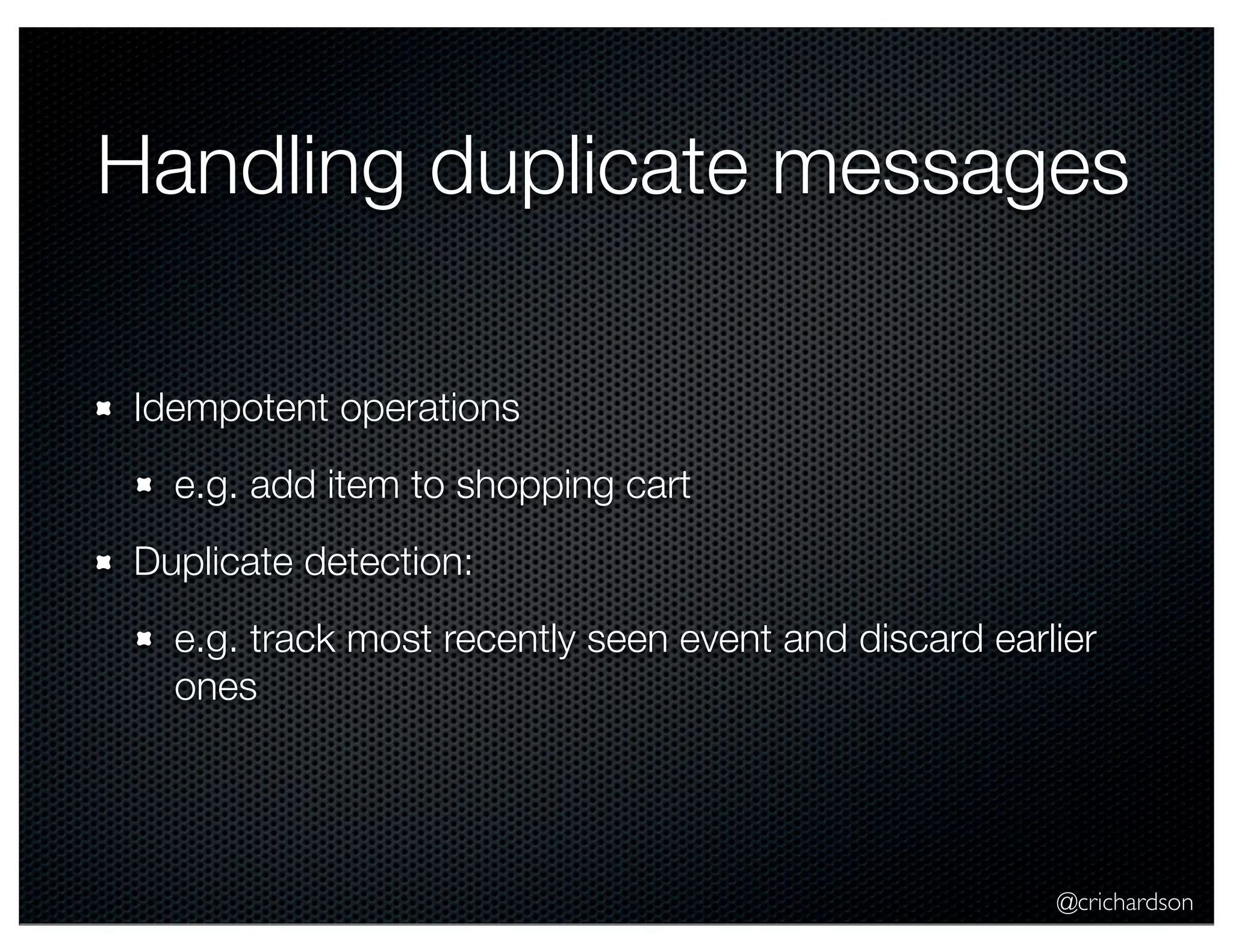



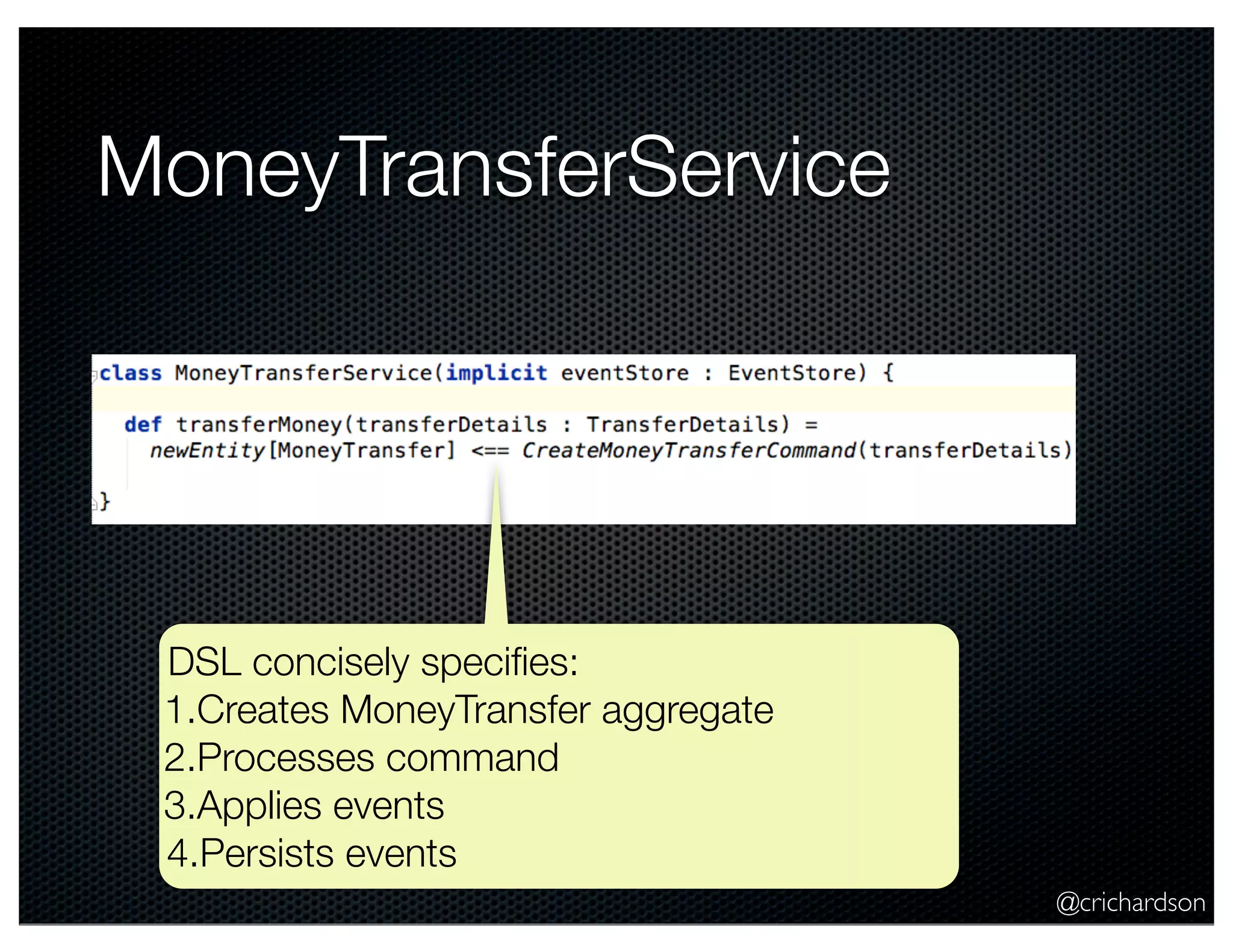
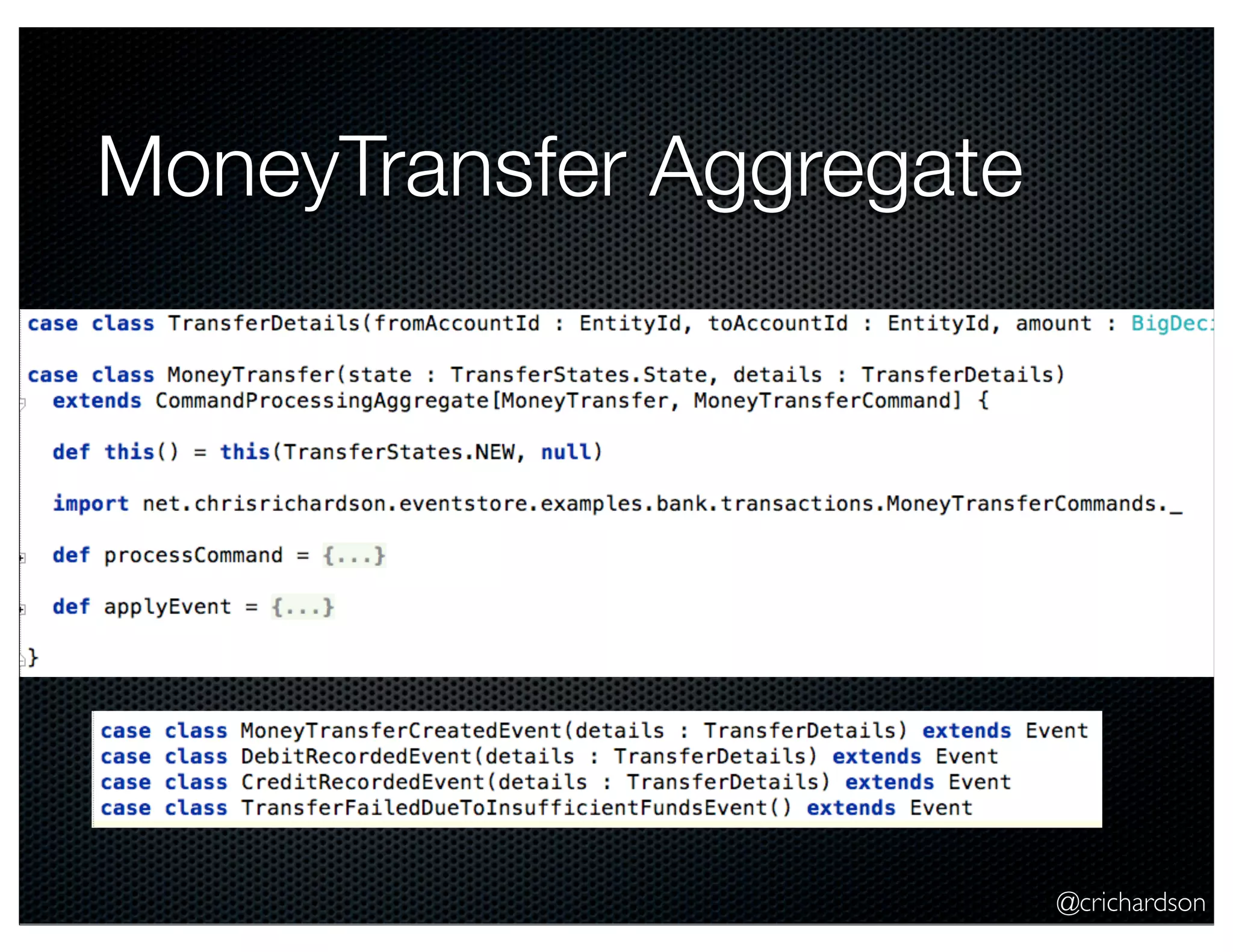
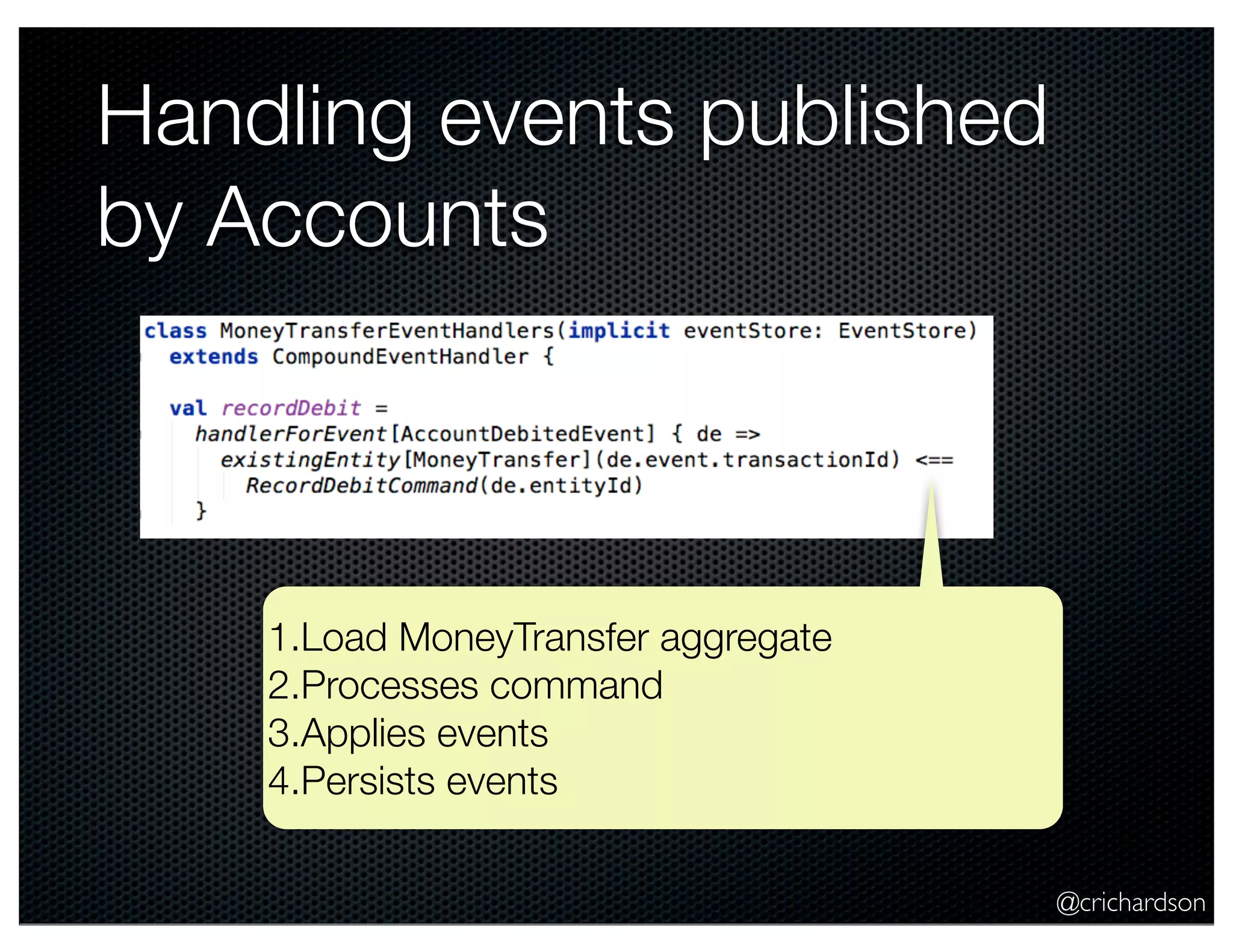
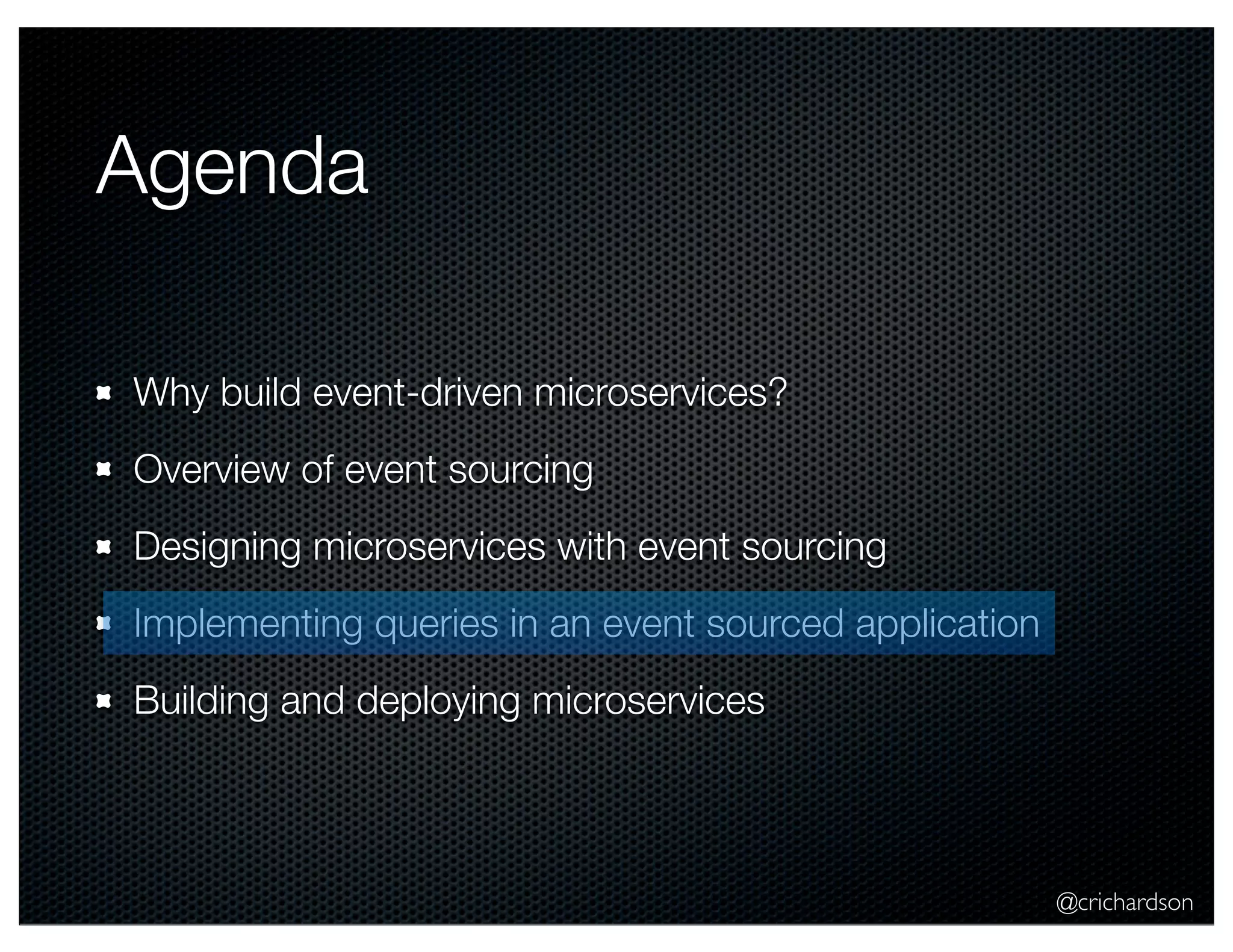


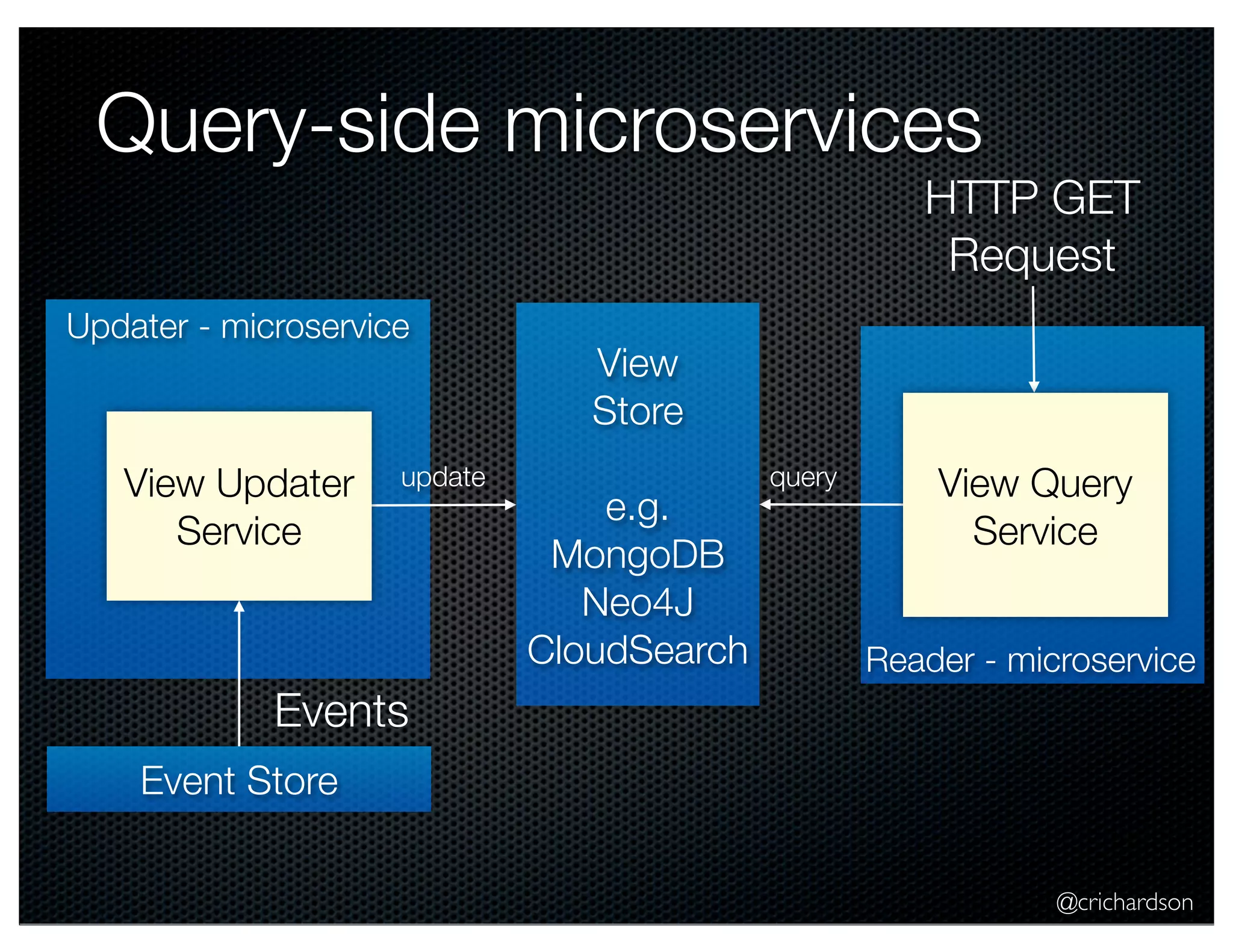
![Persisting account balance and recent transactions in MongoDB Transfers that update The sequence of debits and credits @crichardson { id: "298993498", balance: 100000, transfers : [ {"transferId" : "4552840948484", "fromAccountId" : 298993498, "toAccountId" : 3483948934, "amount" : 5000}, ... ], changes: [ the account {"changeId" : "93843948934", "transferId" : "4552840948484", "transactionType" : "AccountDebited", "amount" : 5000}, ... ] } Denormalized = efficient lookup](https://image.slidesharecdn.com/buildingmicroserviceswithscalafunctionaldomainmodelsandspringbootchrisrichardson-141030115818-conversion-gate01/75/Building-Microservices-with-Scala-functional-domain-models-and-Spring-Boot-Chris-Richardson-49-2048.jpg)
![duplicate event detection @crichardson Updating MongoDB using Spring Data class AccountInfoUpdateService (mongoTemplate : MongoTemplate, ...) extends CompoundEventHandler { @EventHandler def recordDebit(de: DispatchedEvent[AccountDebitedEvent]) = { ... val ci = AccountChangeInfo(...) mongoTemplate.updateMulti( new Query(where("id").is(de.entityId.id).and("version").lt(changeId)), new Update(). dec("balance", amount). push("changes", ci). set("version", changeId), classOf[AccountInfo]) } @EventHandler def recordTransfer(de: DispatchedEvent[MoneyTransferCreatedEvent]) = ... } insert/In-place update updates to and from accounts](https://image.slidesharecdn.com/buildingmicroserviceswithscalafunctionaldomainmodelsandspringbootchrisrichardson-141030115818-conversion-gate01/75/Building-Microservices-with-Scala-functional-domain-models-and-Spring-Boot-Chris-Richardson-50-2048.jpg)
![Retrieving account info from MongoDB using Spring Data class AccountInfoQueryService(accountInfoRepository : AccountInfoRepository) { @crichardson def findByAccountId(accountId : EntityId) : AccountInfo = accountInfoRepository.findOne(accountId.id) } case class AccountInfo(id : String, balance : Long, transactions : List[AccountTransactionInfo], changes : List[ChangeInfo], version : String) case class AccountTransactionInfo(changeId : String, transactionId : String, transactionType : String, amount : Long, balanceDelta : Long) trait AccountInfoRepository extends MongoRepository[AccountInfo, String] Implementation generated by Spring Data](https://image.slidesharecdn.com/buildingmicroserviceswithscalafunctionaldomainmodelsandspringbootchrisrichardson-141030115818-conversion-gate01/75/Building-Microservices-with-Scala-functional-domain-models-and-Spring-Boot-Chris-Richardson-51-2048.jpg)

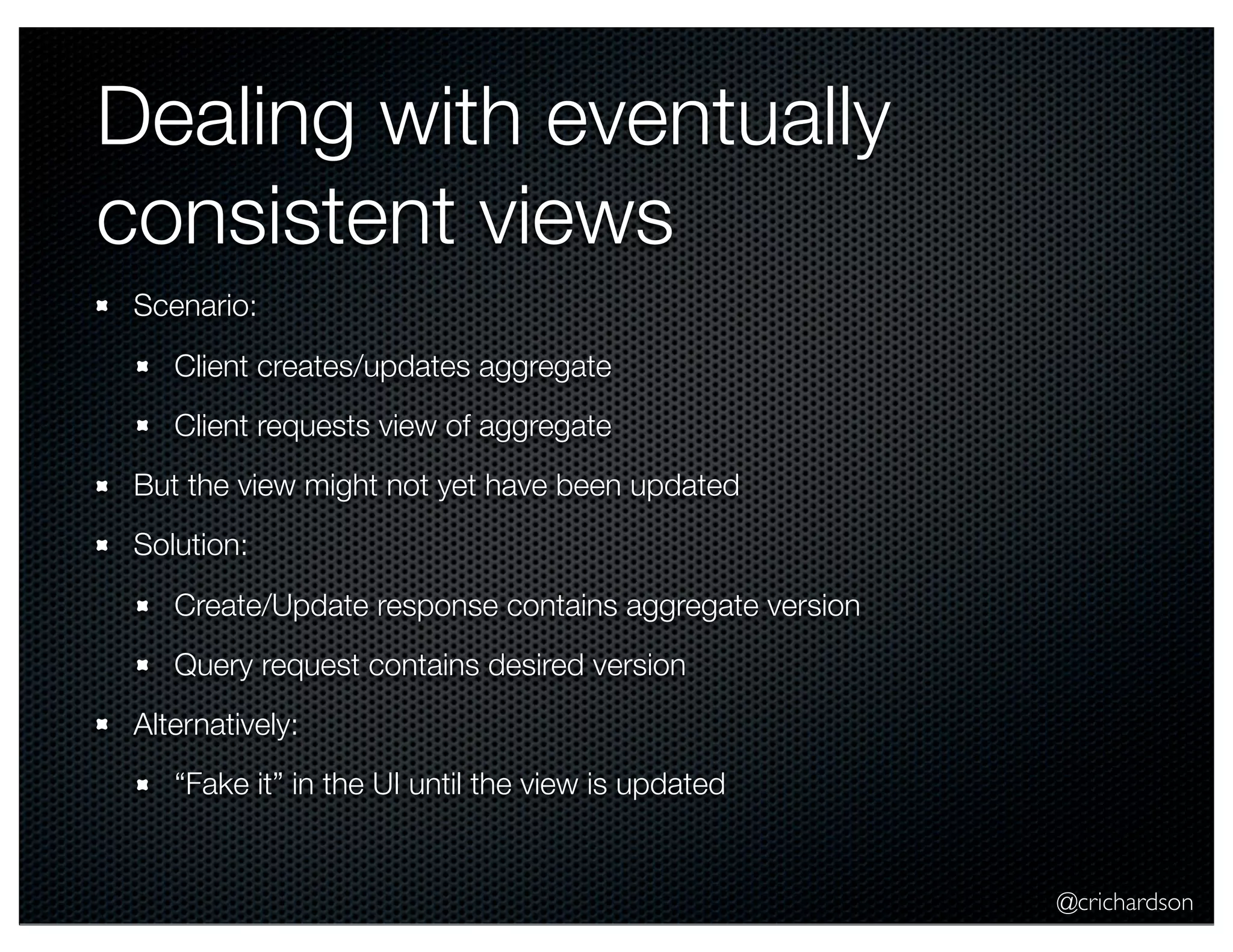
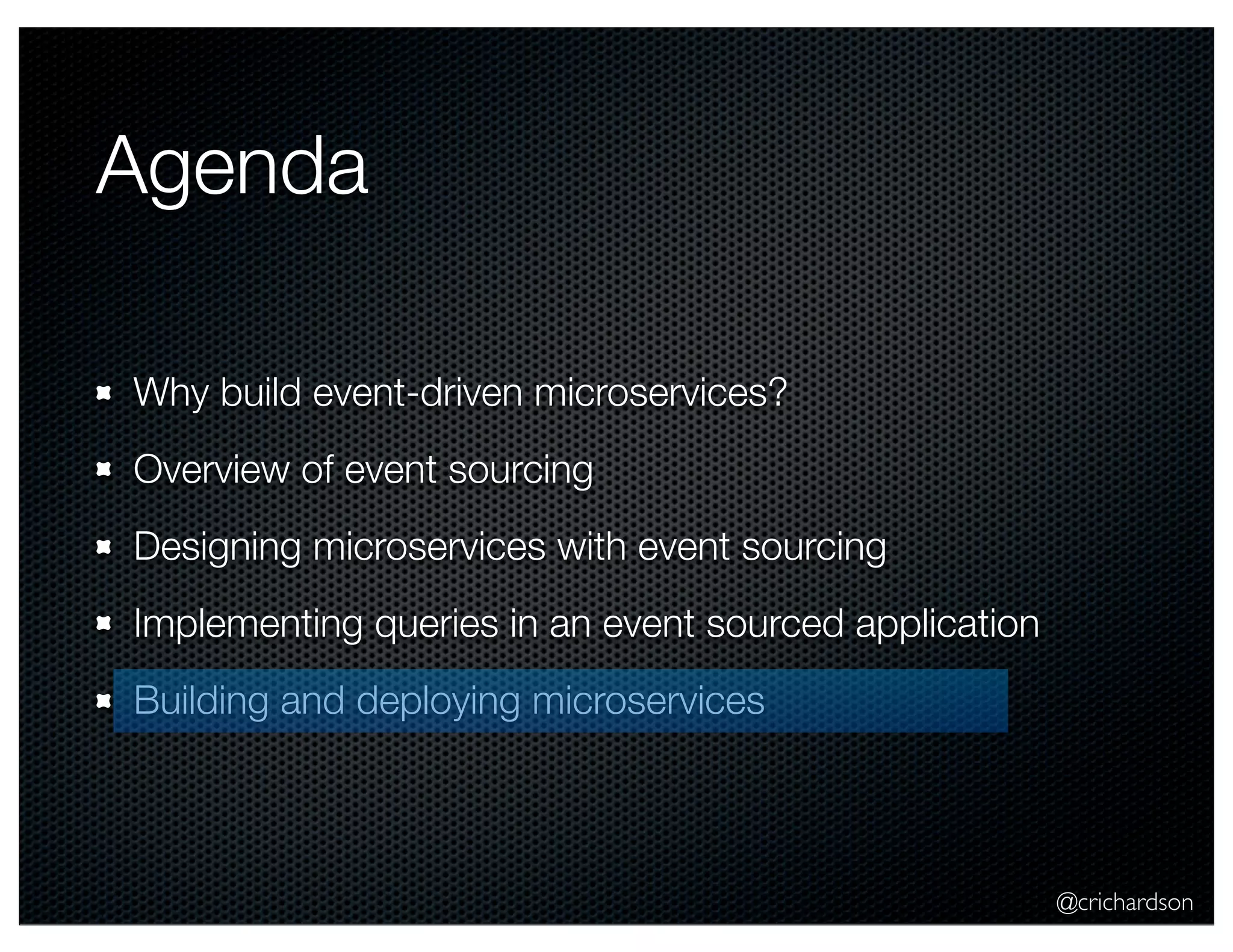


![Tiny Spring configuration for Account microservice Scan for controllers @crichardson @Configuration @EnableAutoConfiguration @Import(classOf[JdbcEventStoreConfiguration])) @ComponentScan class AccountConfiguration { @Bean def accountService(eventStore : EventStore) = new AccountService(eventStore) @Bean def accountEventHandlers(eventStore : EventStore) = EventHandlerRegistrar.makeFromCompoundEventHandler( eventStore, "accountEventHandlers", new TransferWorkflowAccountHandlers(eventStore)) @Bean @Primary def scalaObjectMapper() = ScalaObjectMapper } Service Event handlers Customize JSON serialization](https://image.slidesharecdn.com/buildingmicroserviceswithscalafunctionaldomainmodelsandspringbootchrisrichardson-141030115818-conversion-gate01/75/Building-Microservices-with-Scala-functional-domain-models-and-Spring-Boot-Chris-Richardson-57-2048.jpg)
![@crichardson The Main program object BankingMain extends App { SpringApplication.run(classOf[AccountConfiguration], args :_ *) }](https://image.slidesharecdn.com/buildingmicroserviceswithscalafunctionaldomainmodelsandspringbootchrisrichardson-141030115818-conversion-gate01/75/Building-Microservices-with-Scala-functional-domain-models-and-Spring-Boot-Chris-Richardson-58-2048.jpg)
